



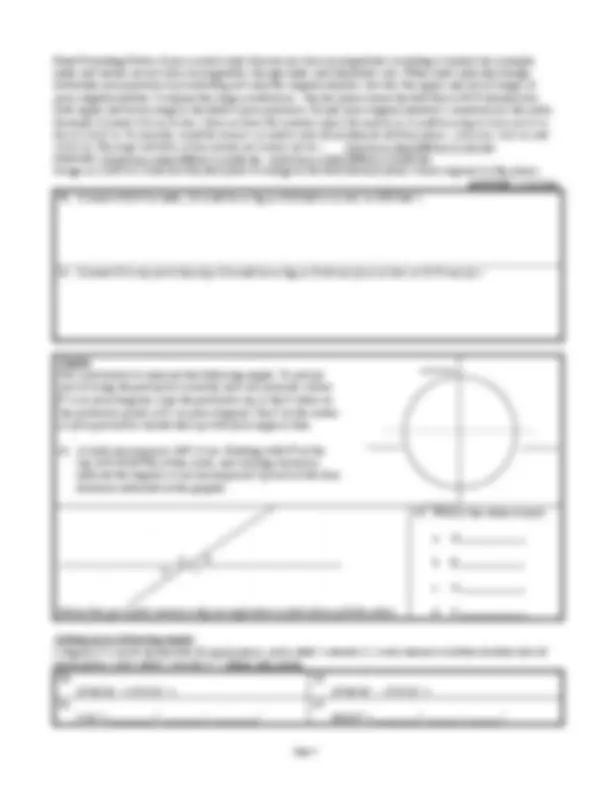
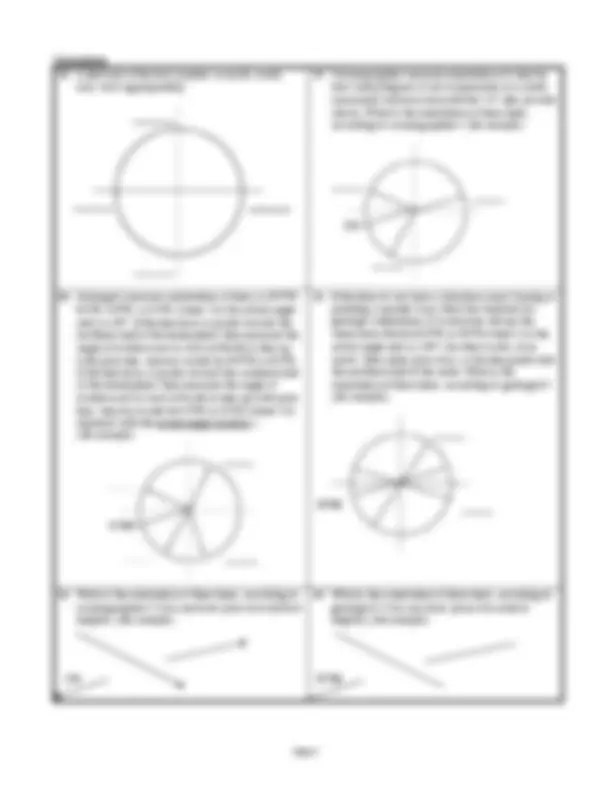
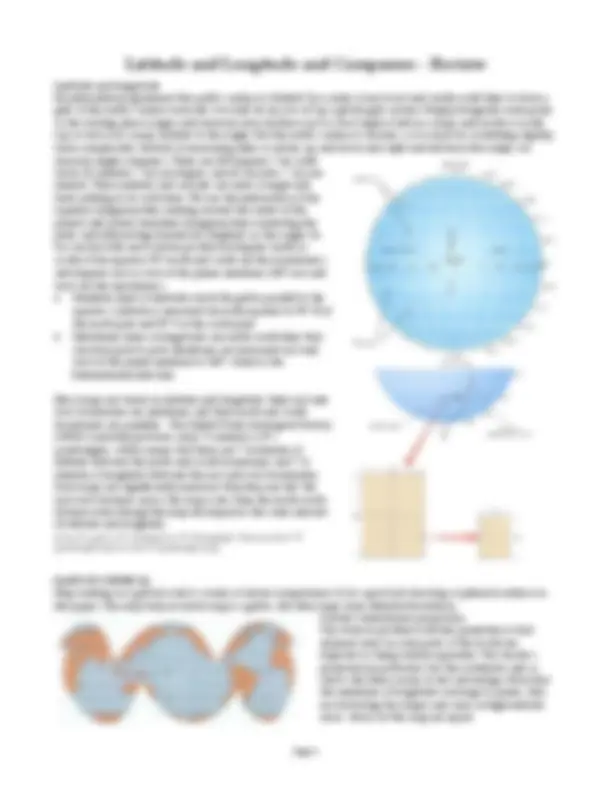
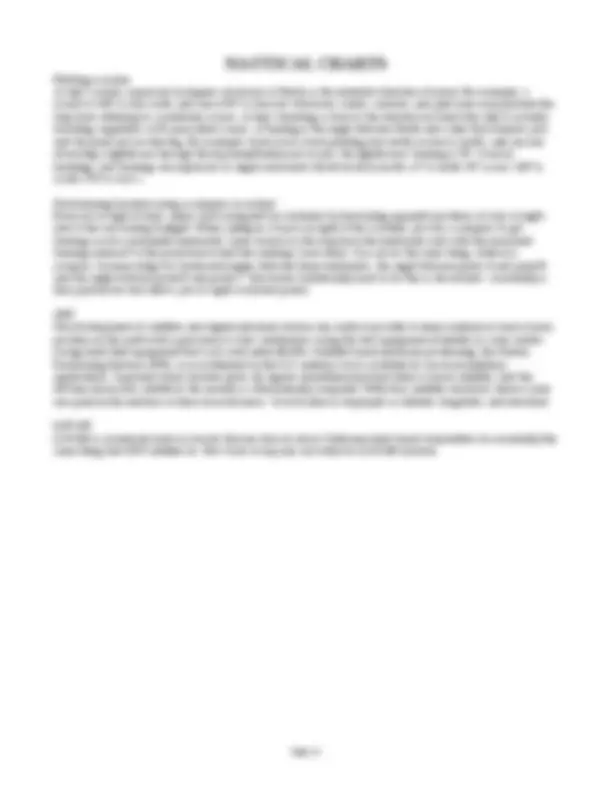
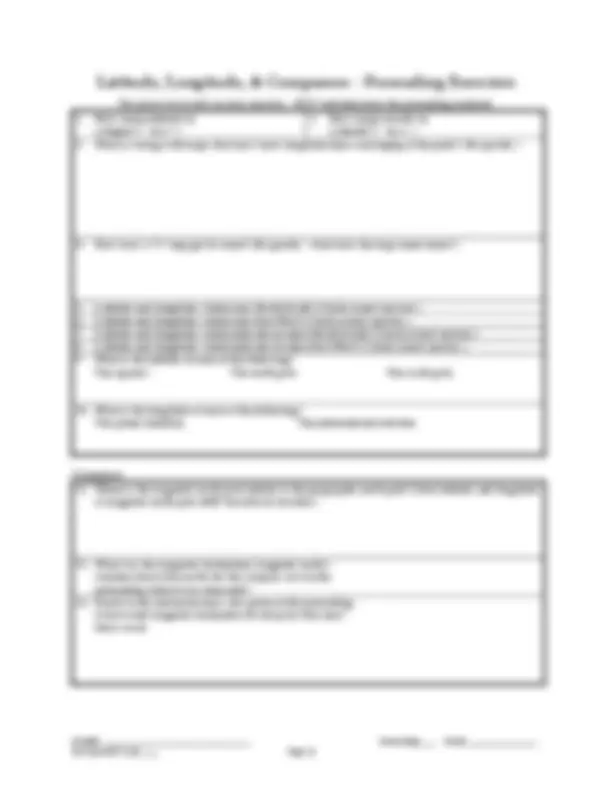

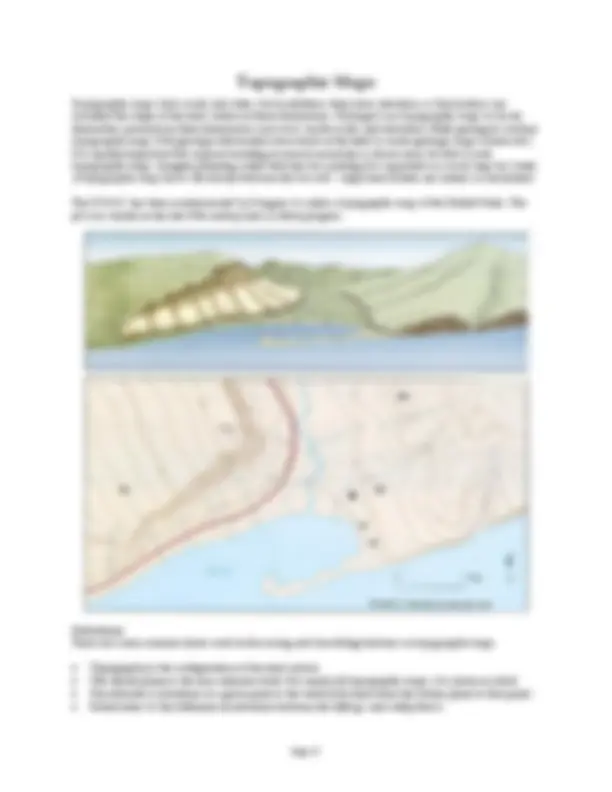
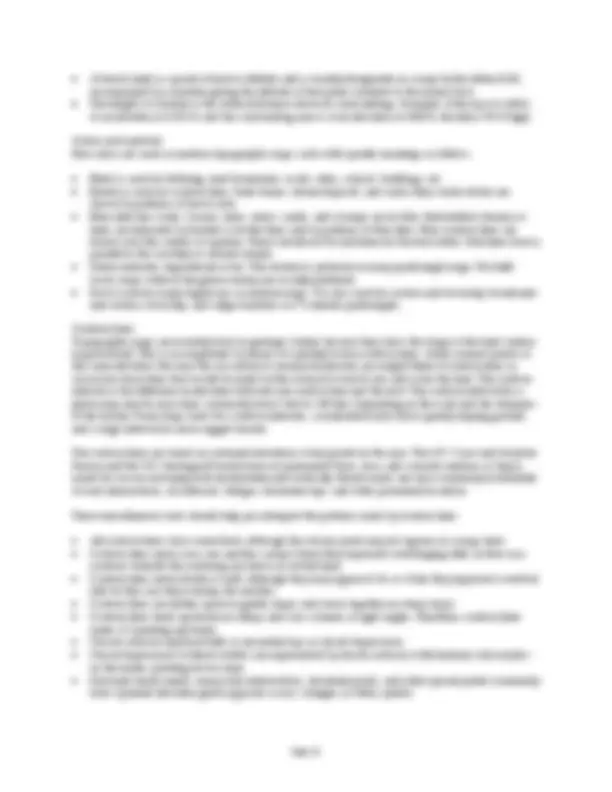
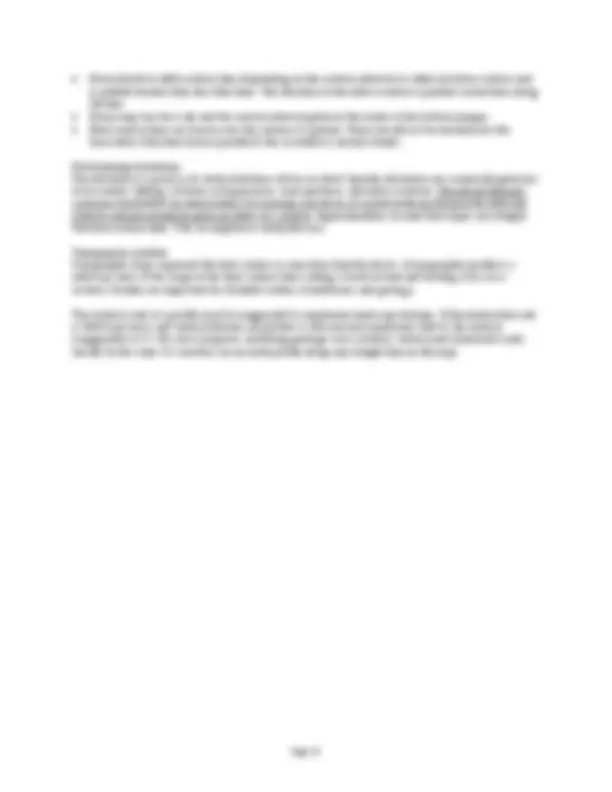
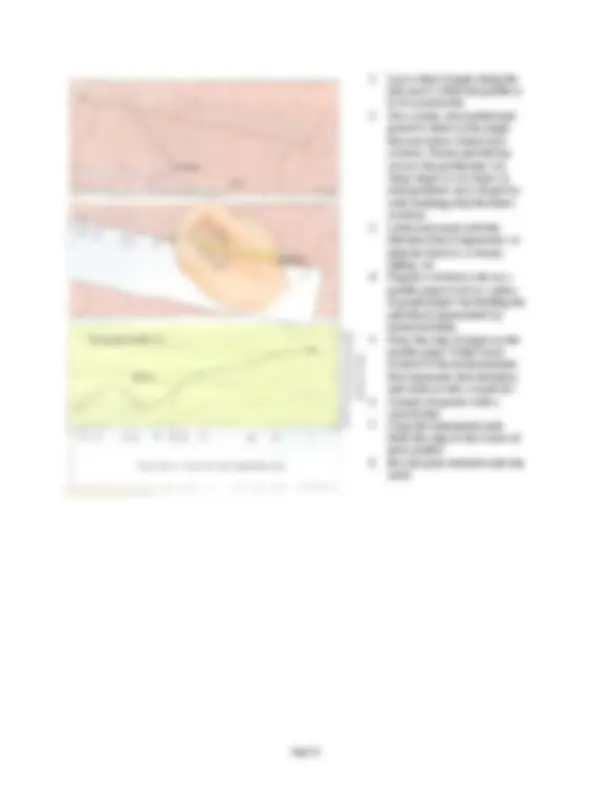
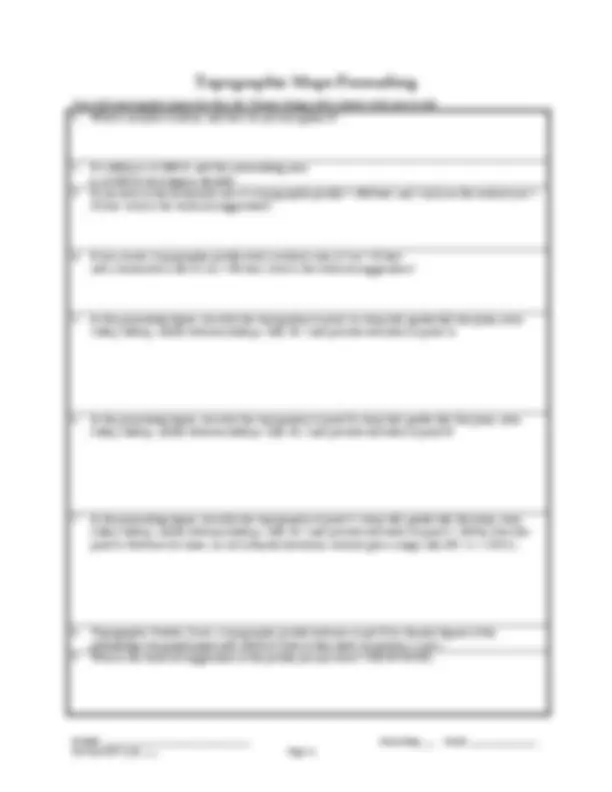

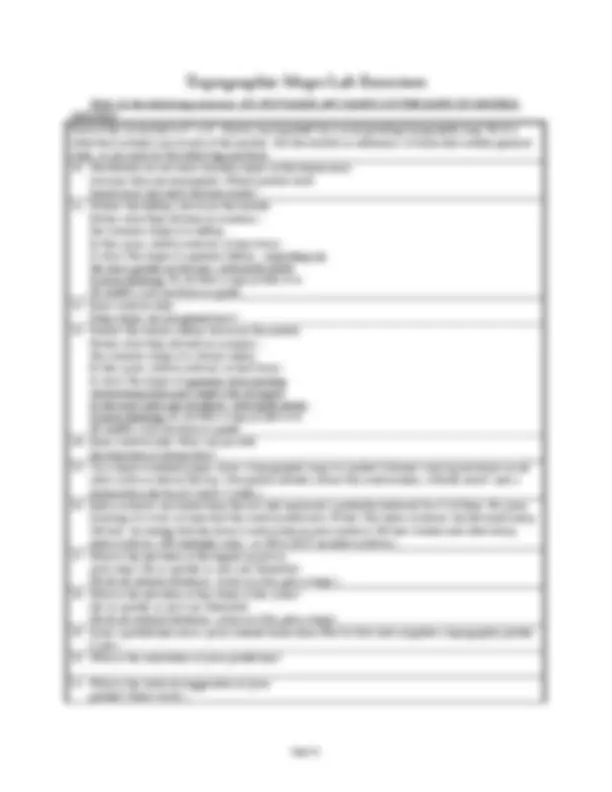
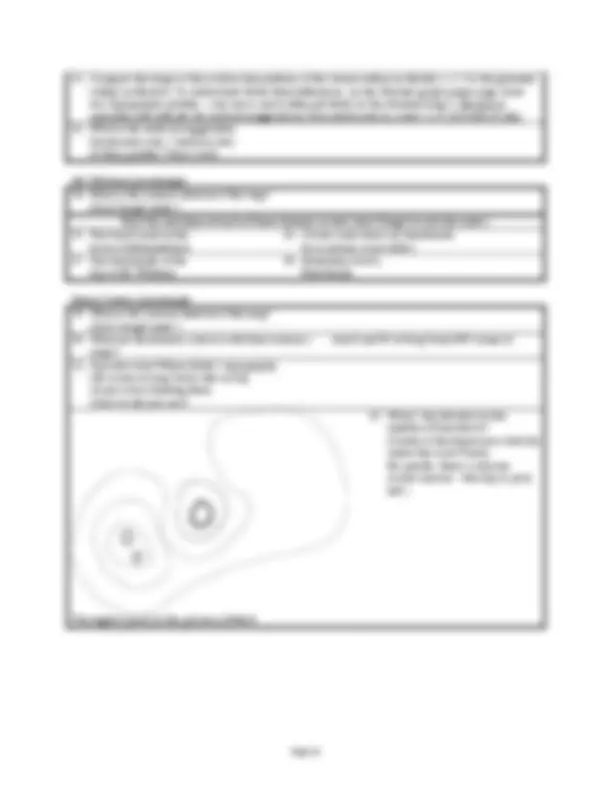
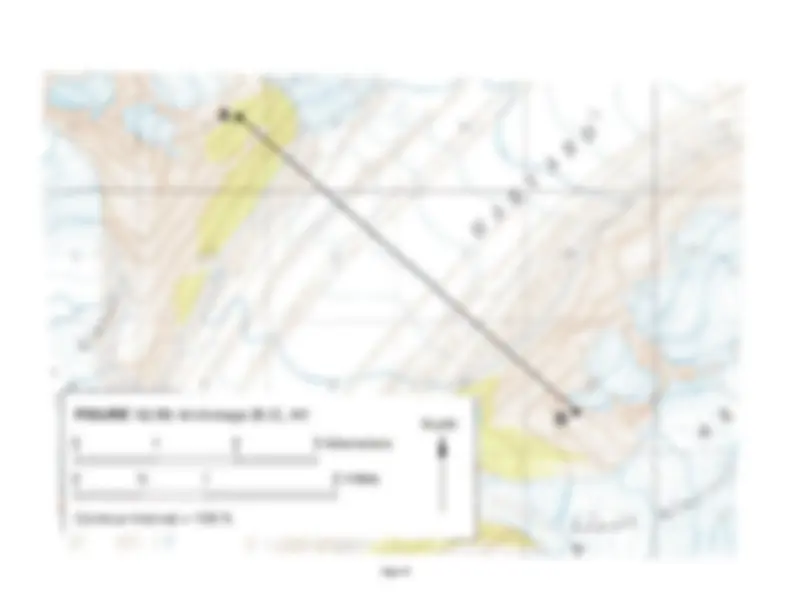

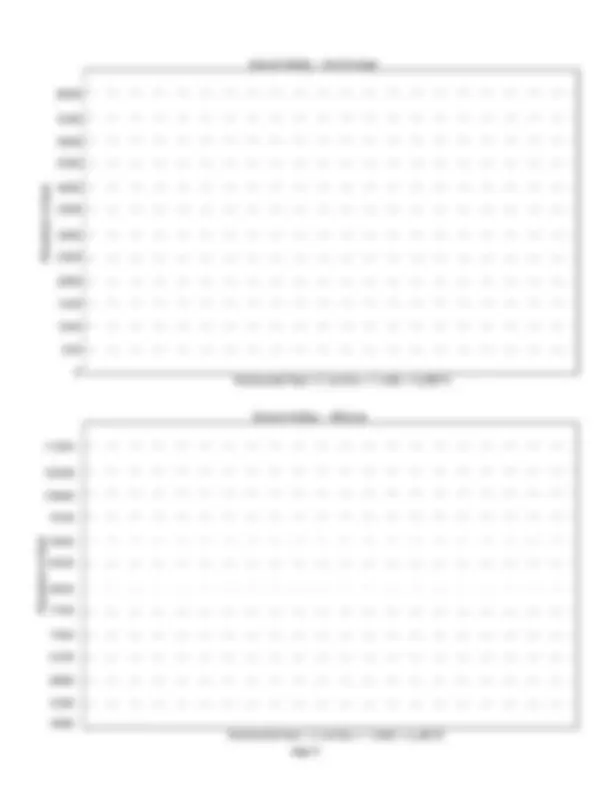

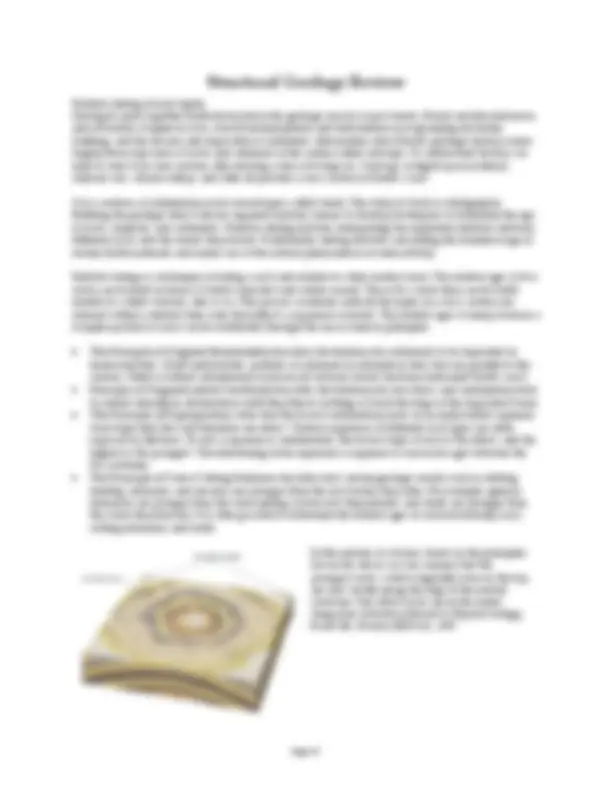
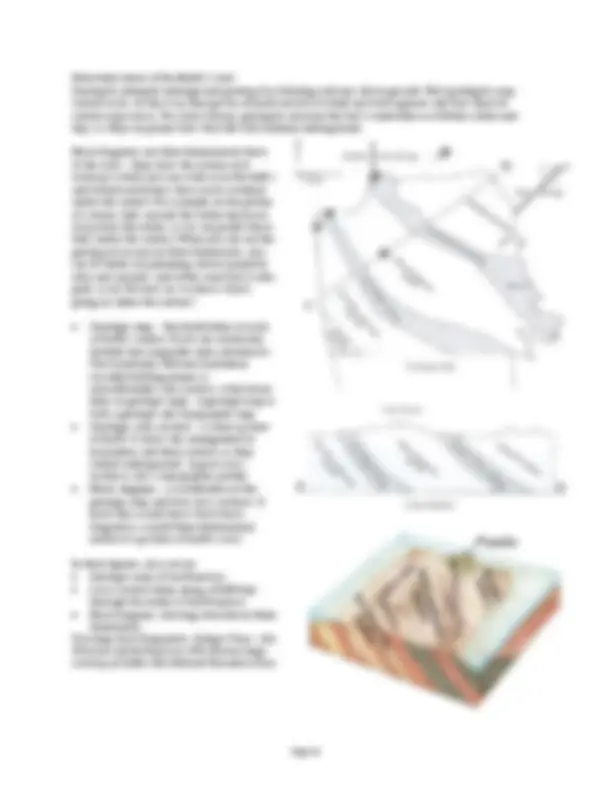
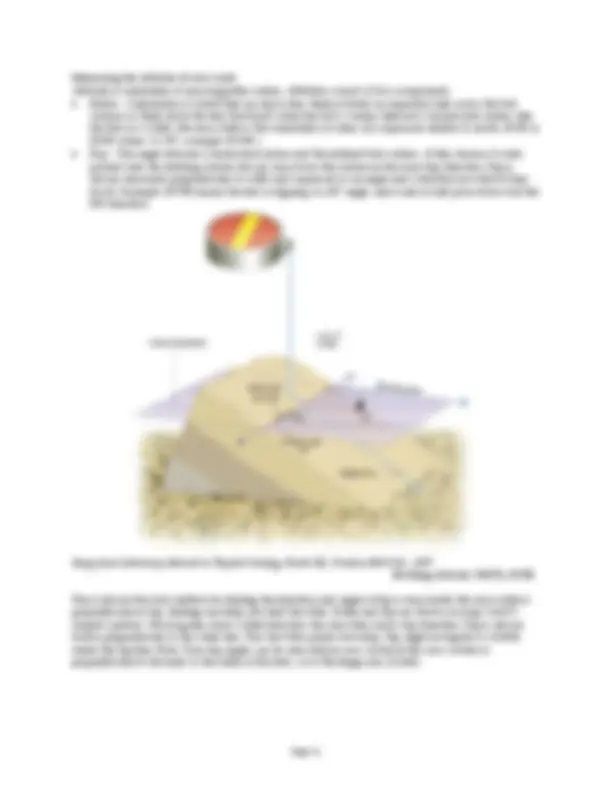
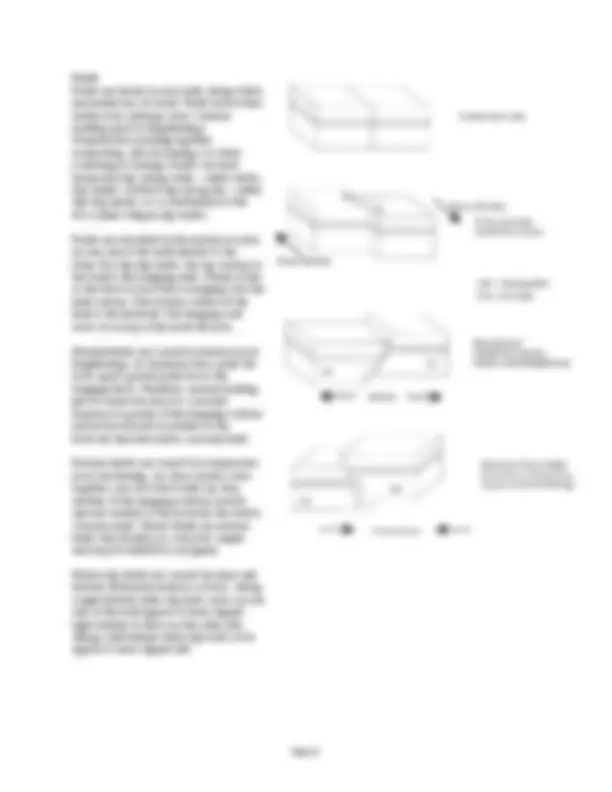
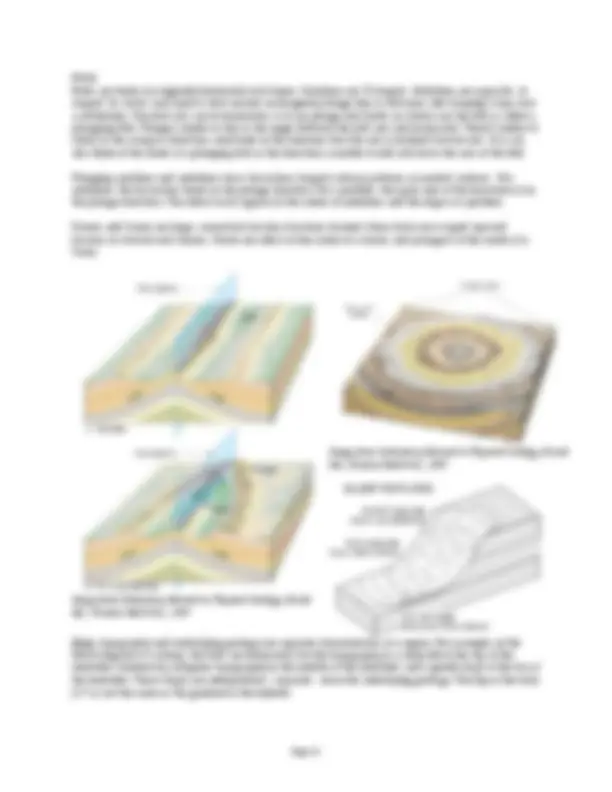
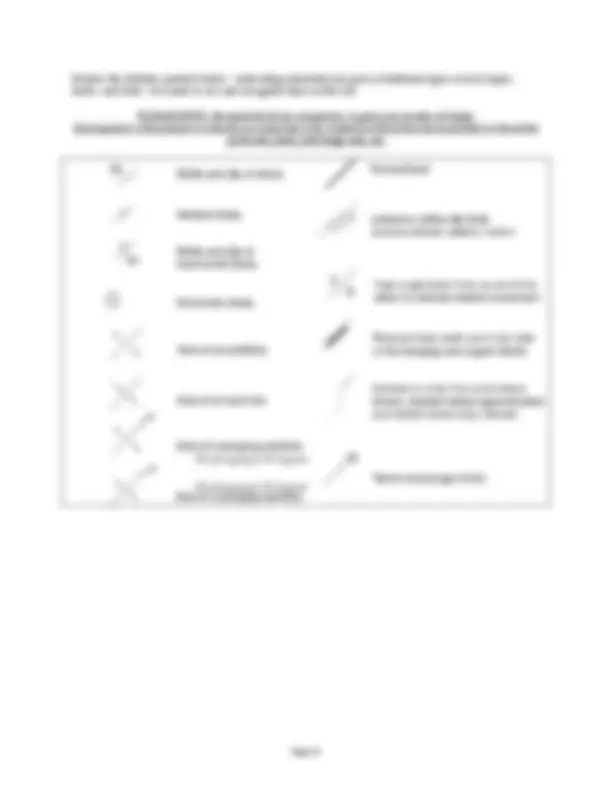
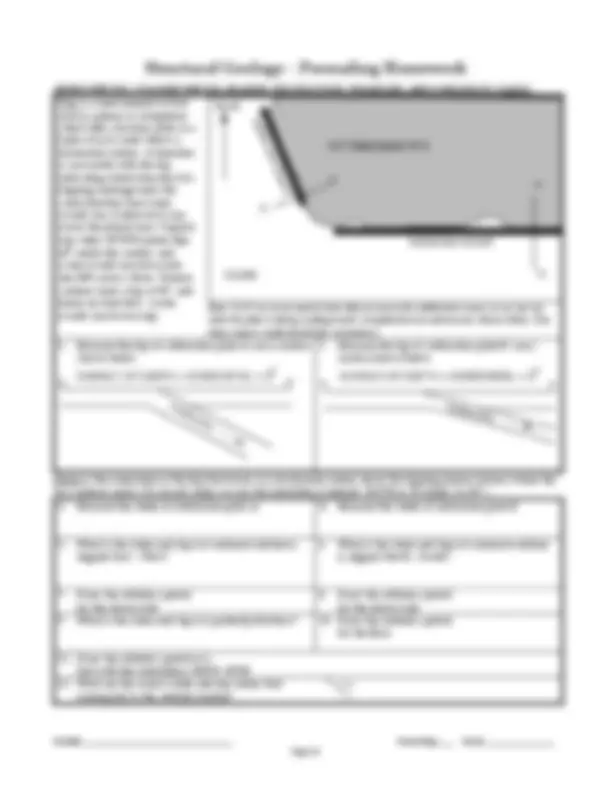

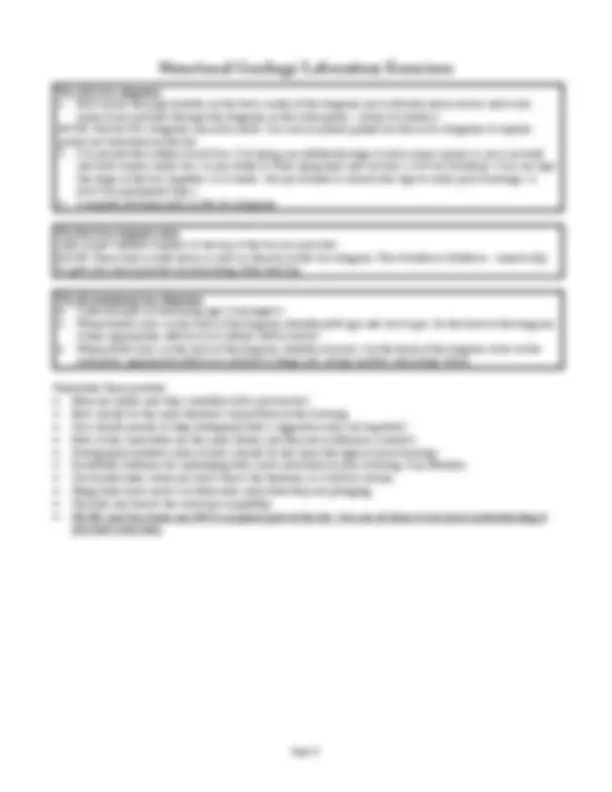

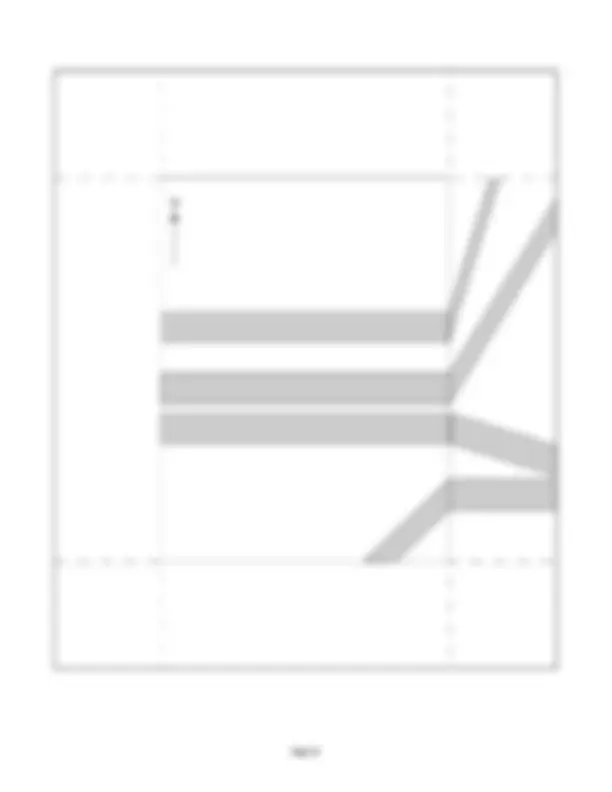

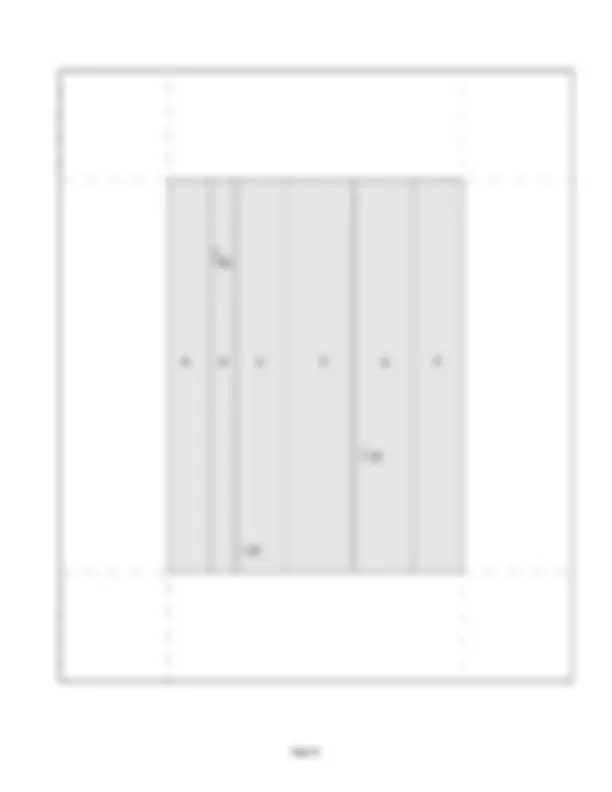

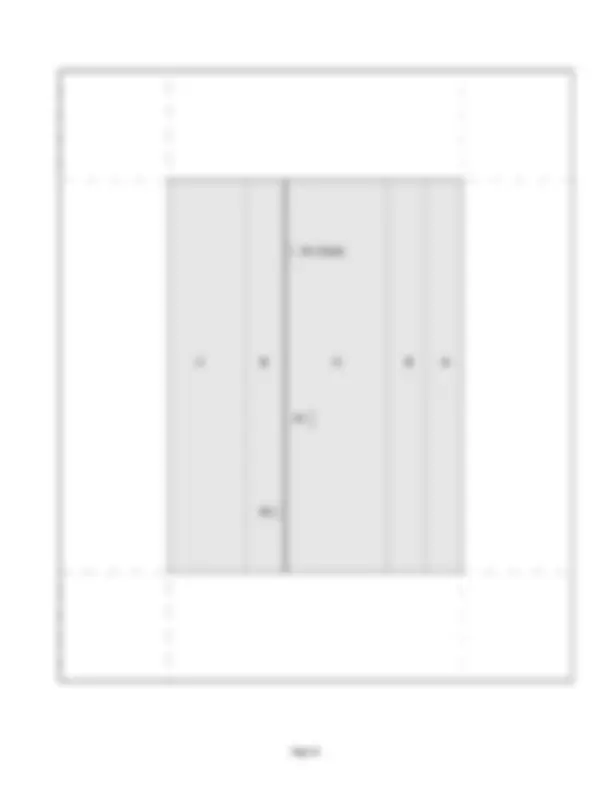

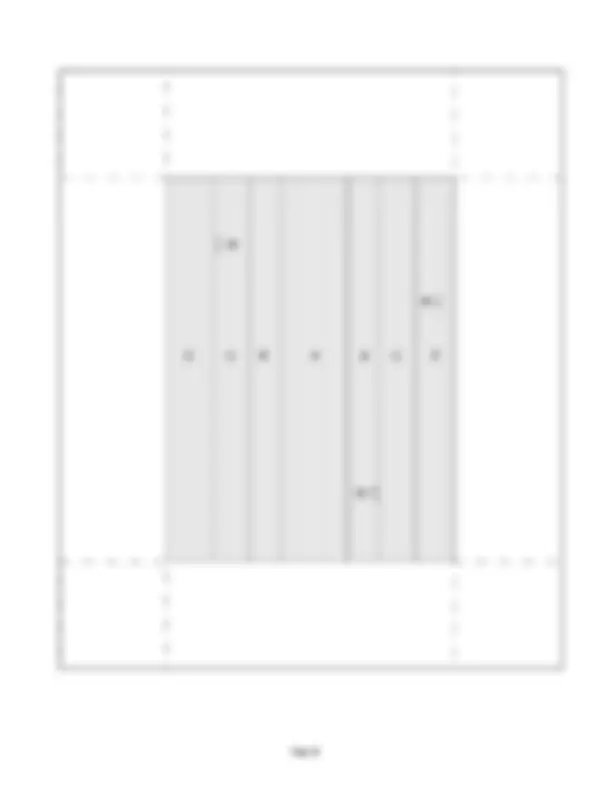

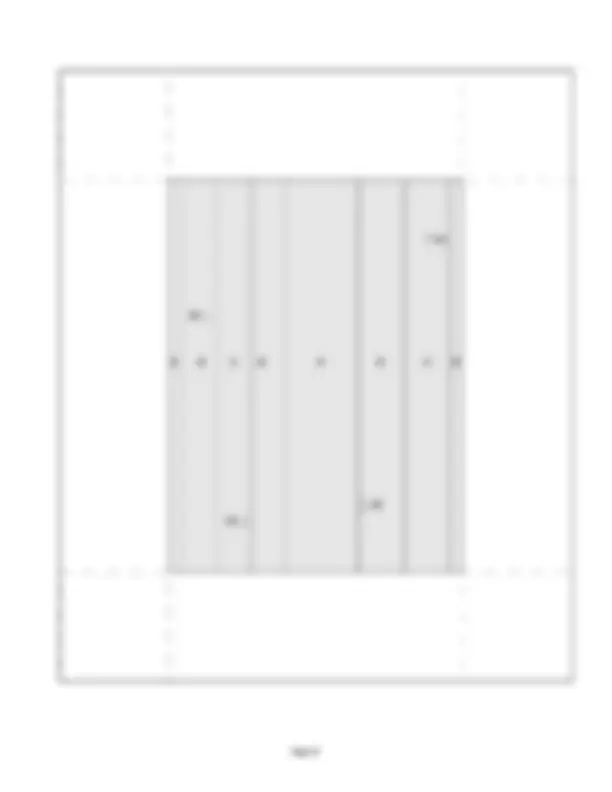

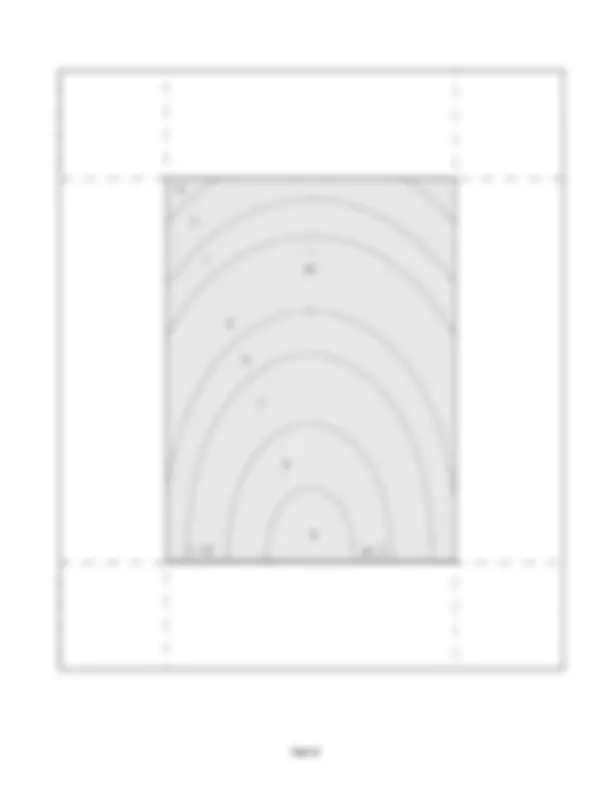

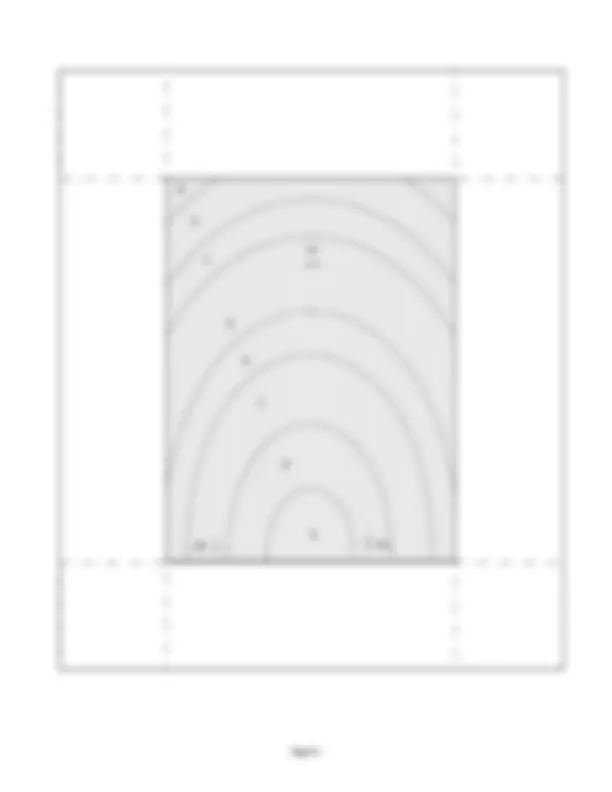

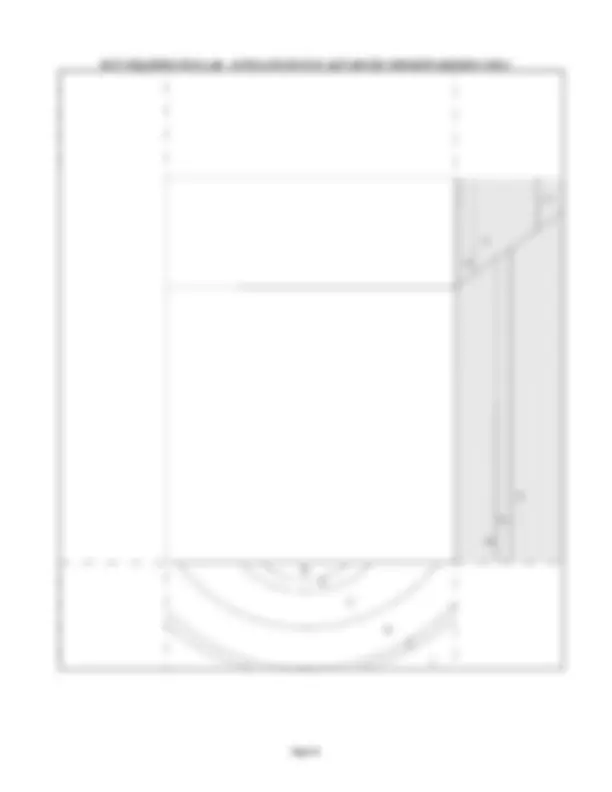

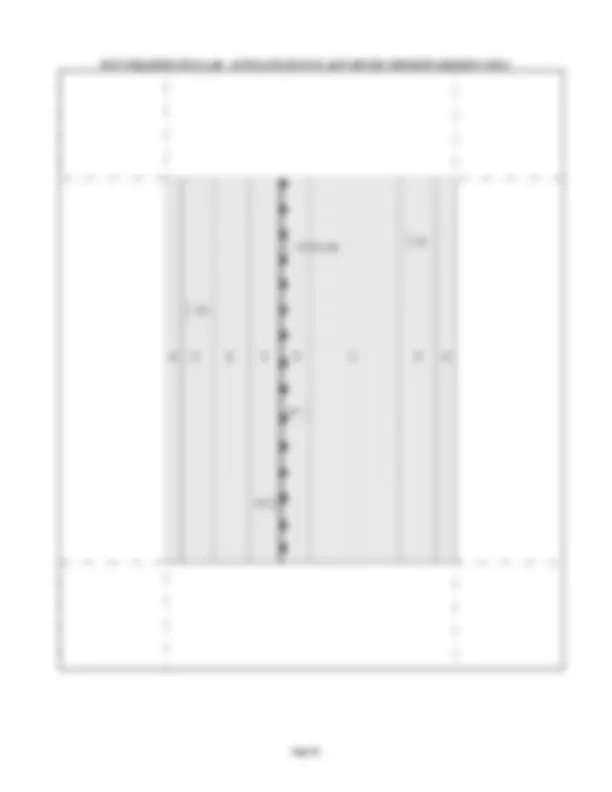

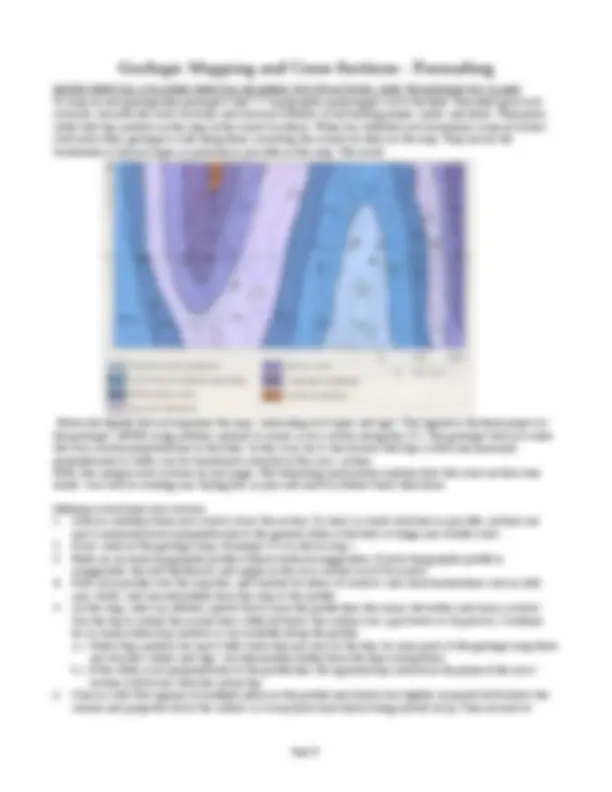
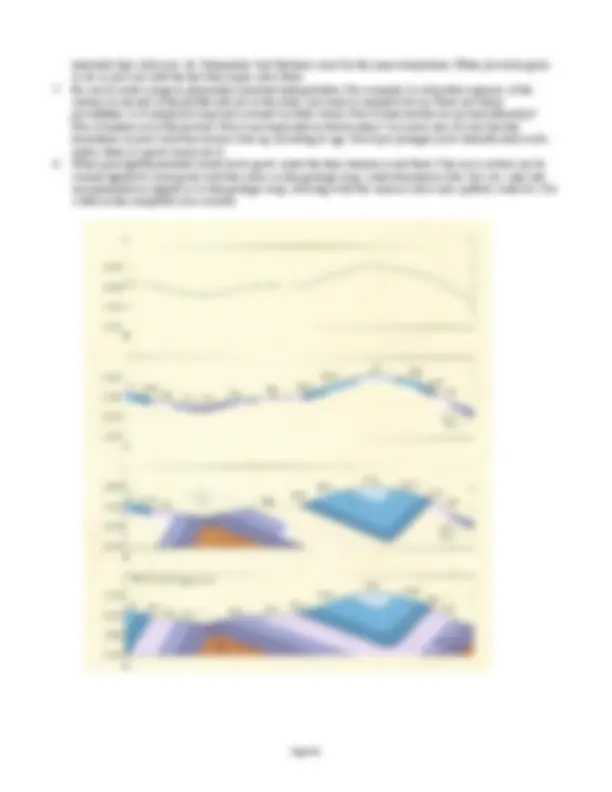
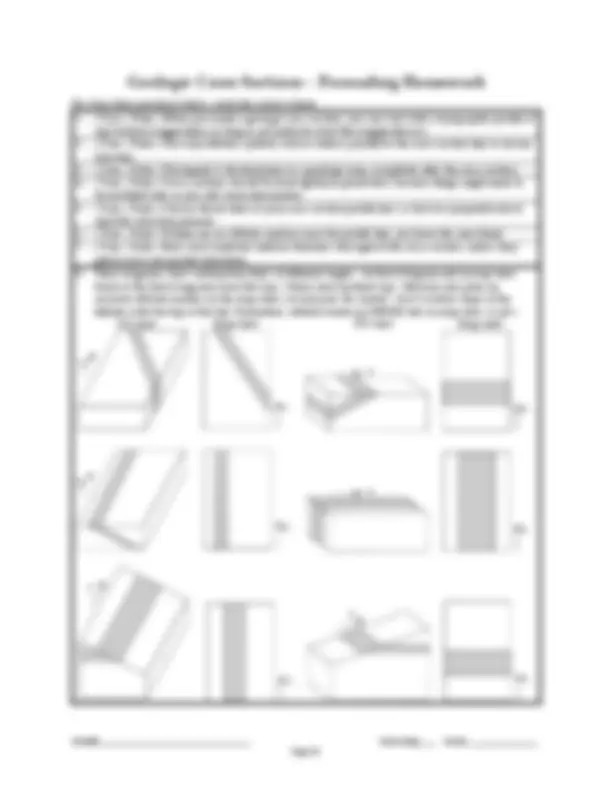

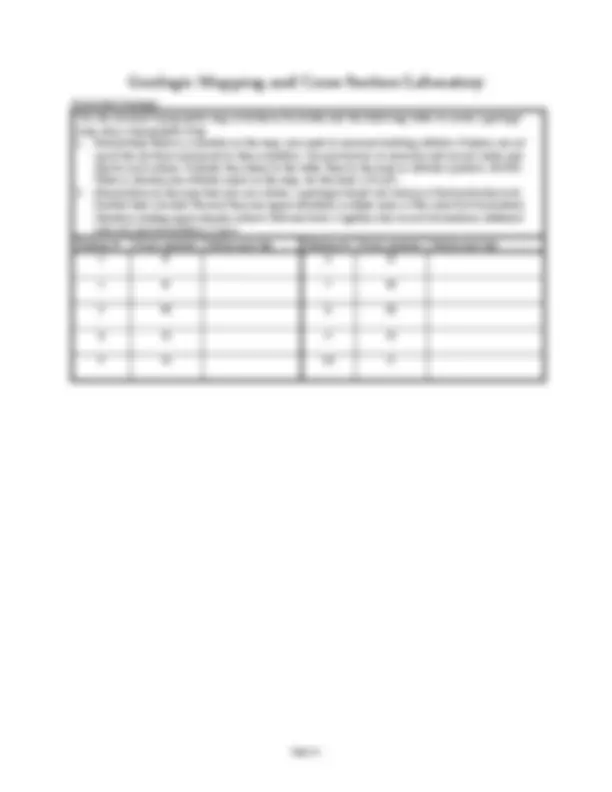
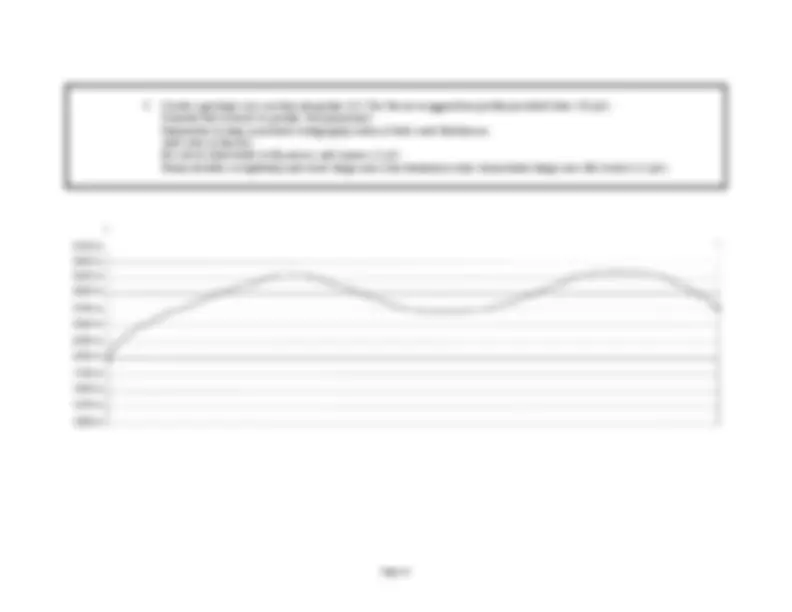
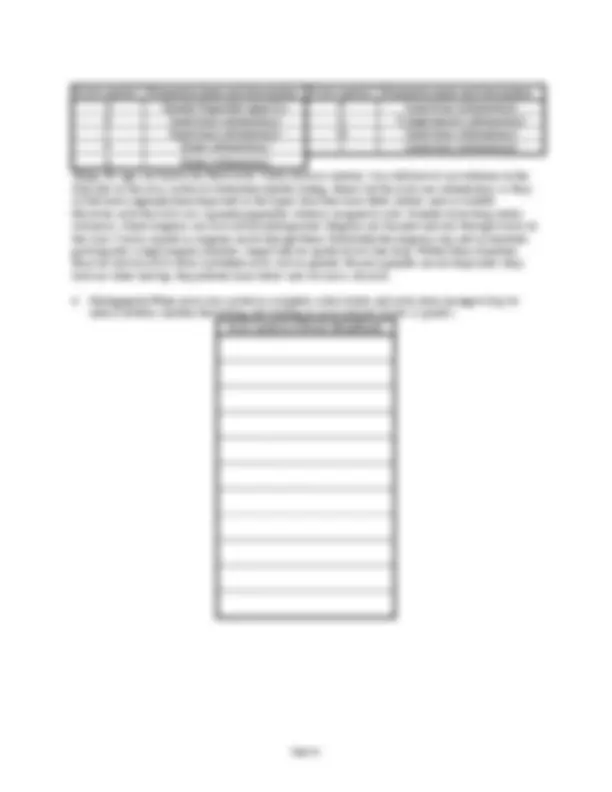
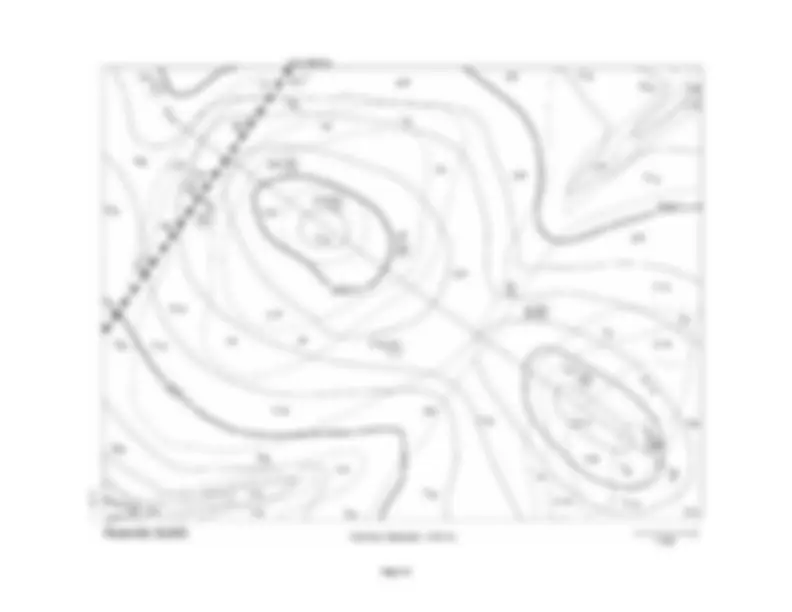

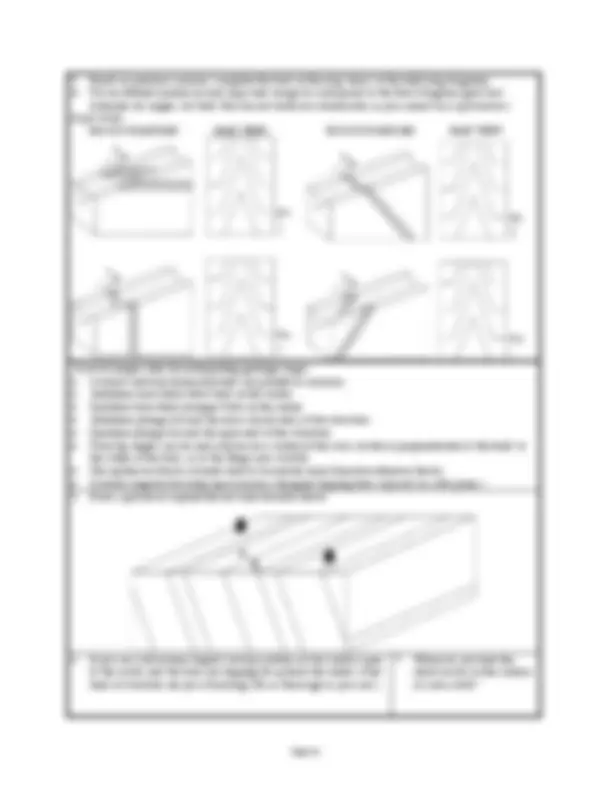
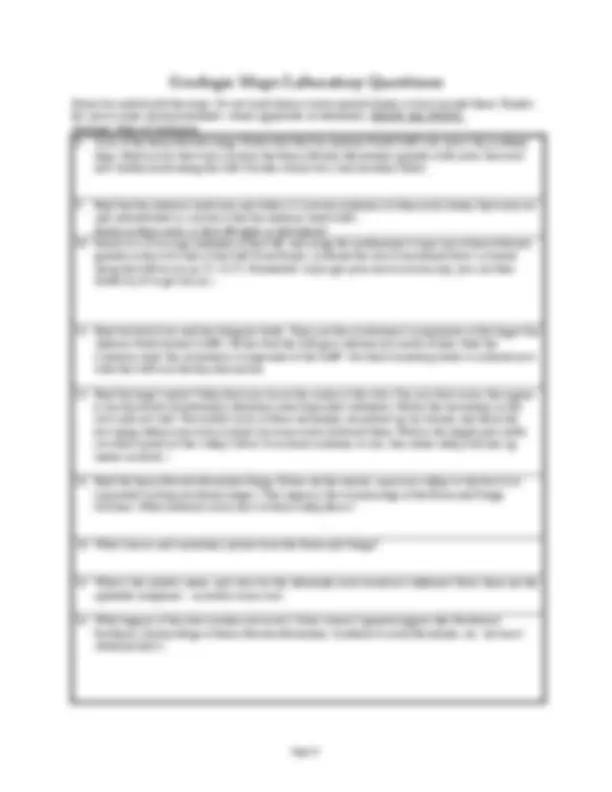
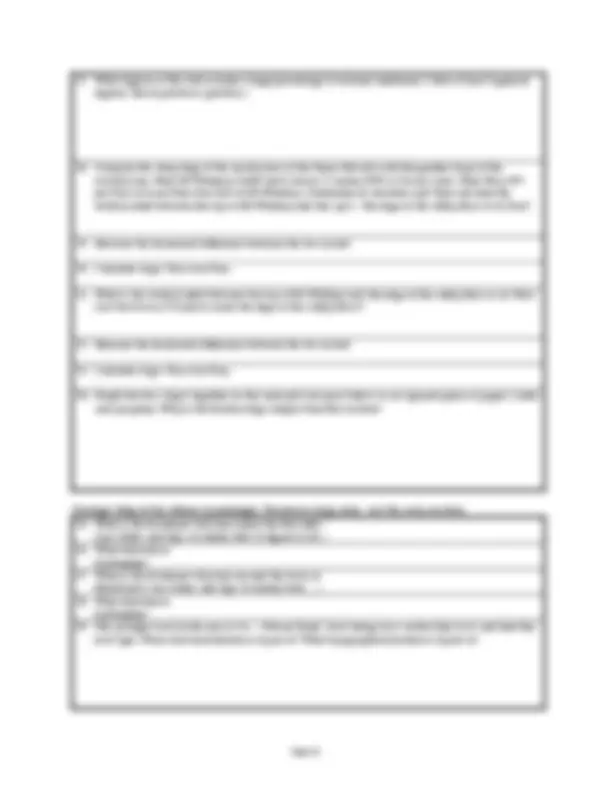
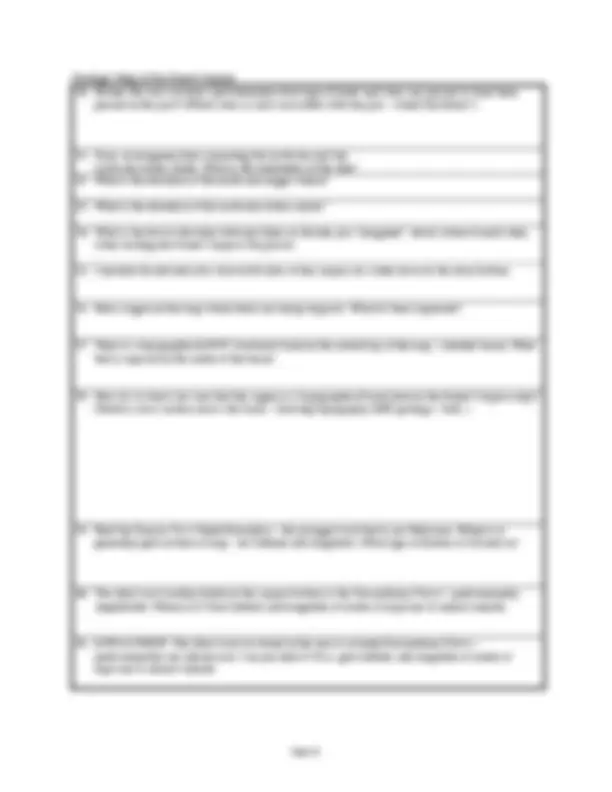

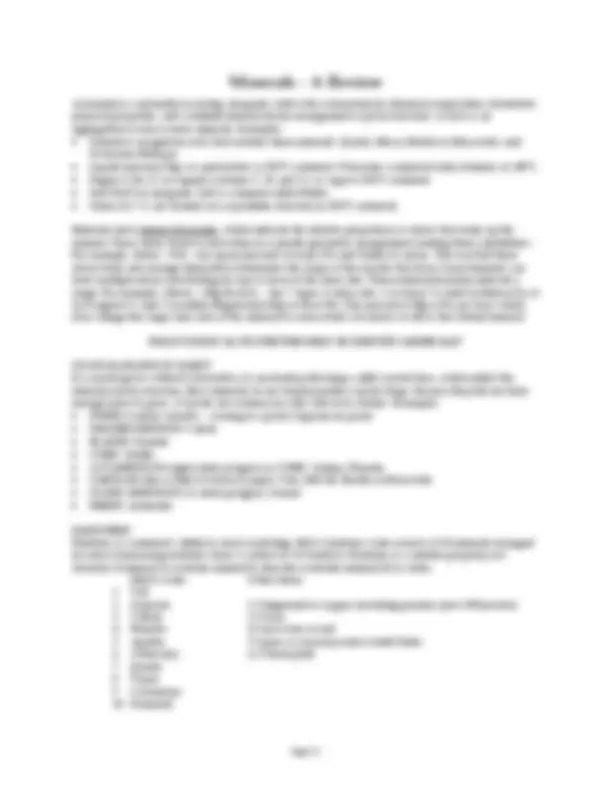
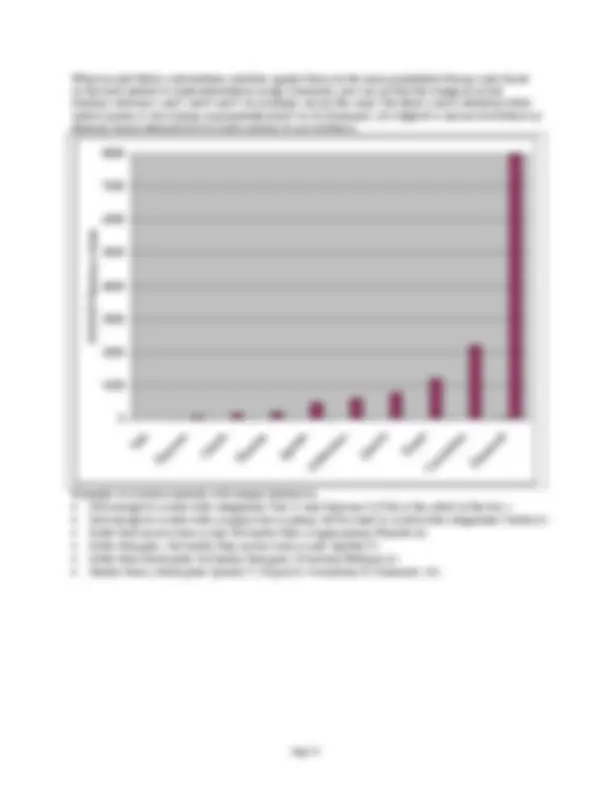
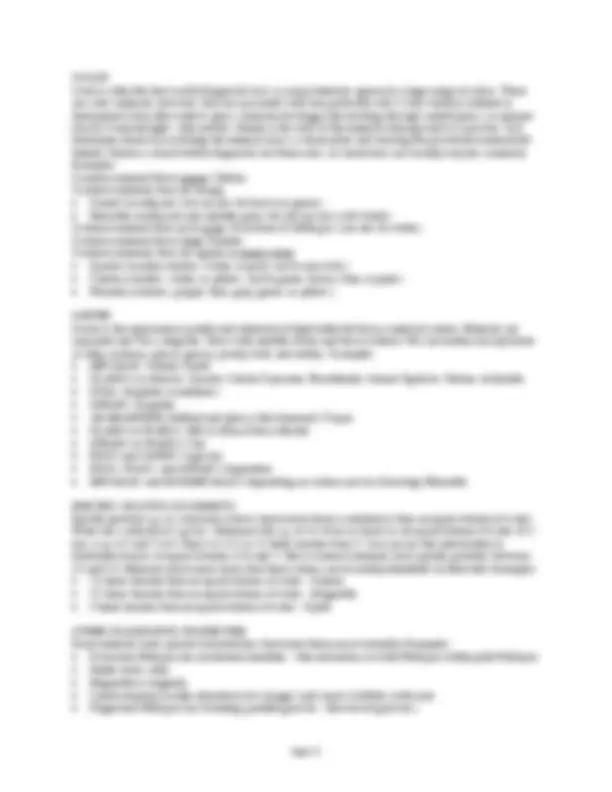
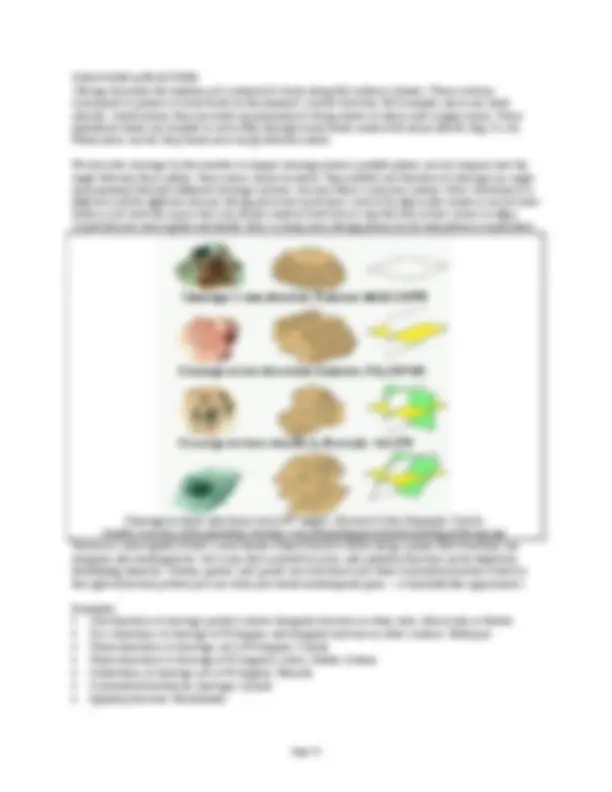
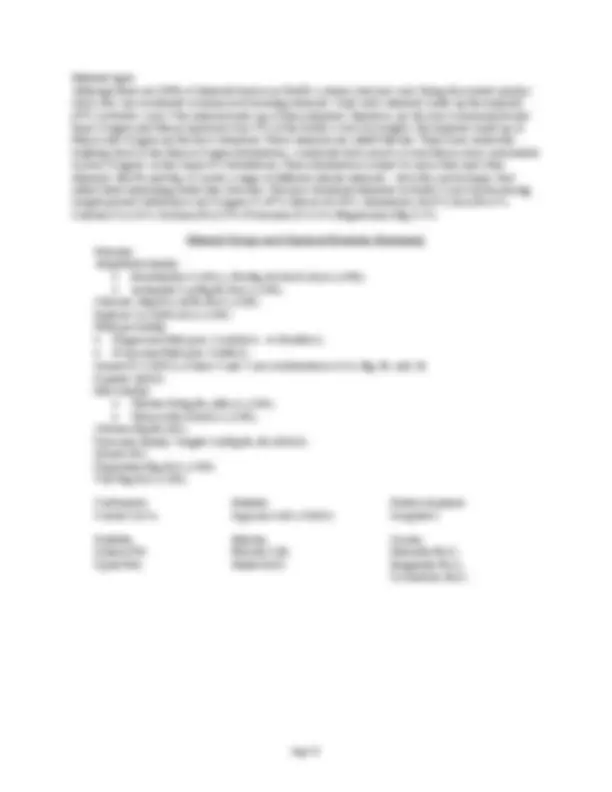
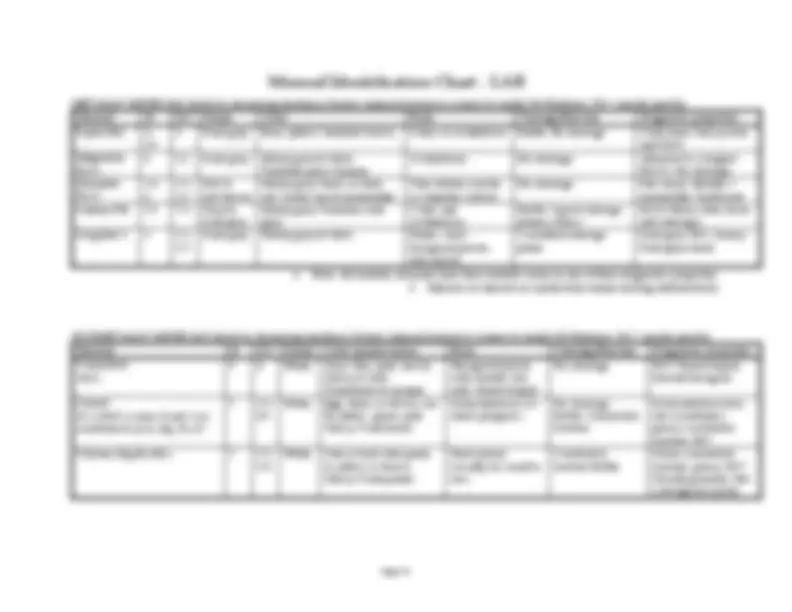
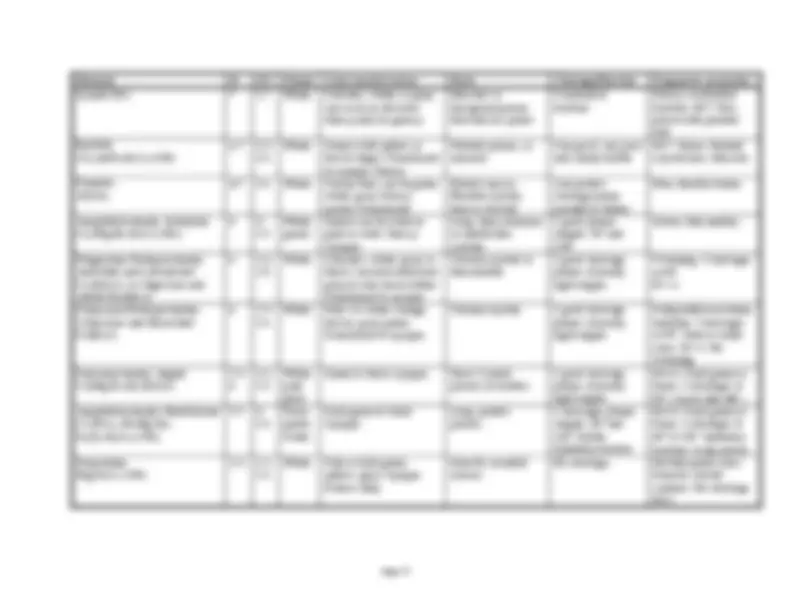
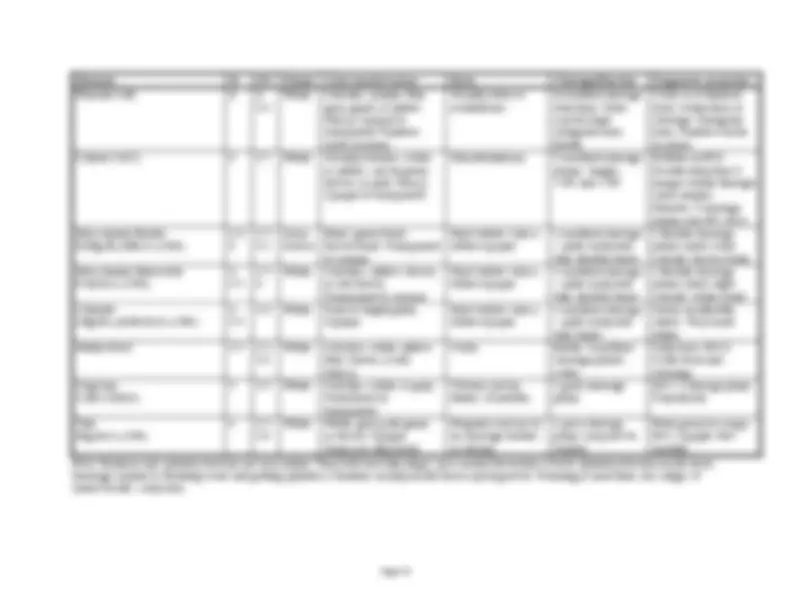
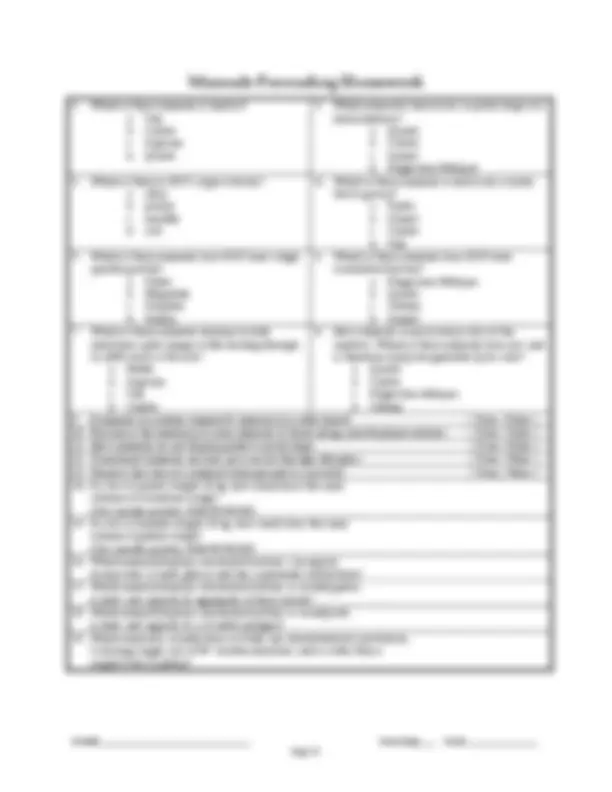

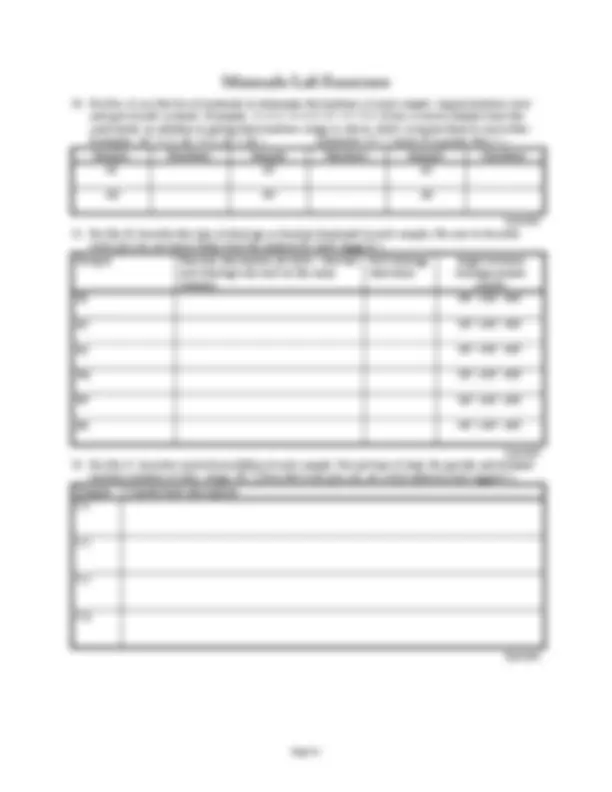
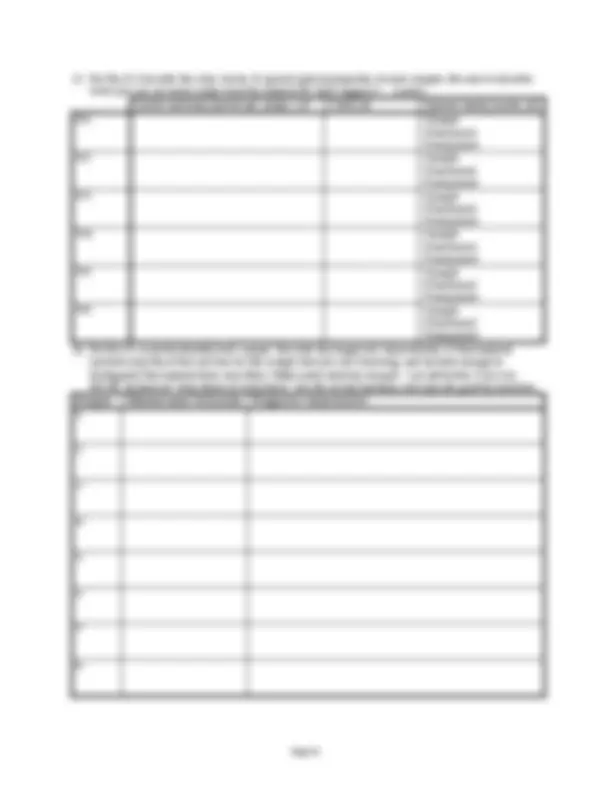
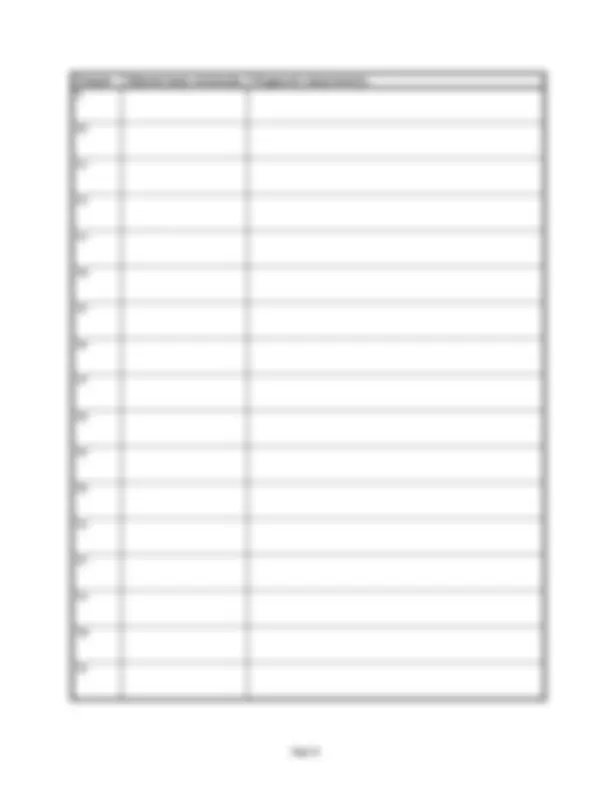

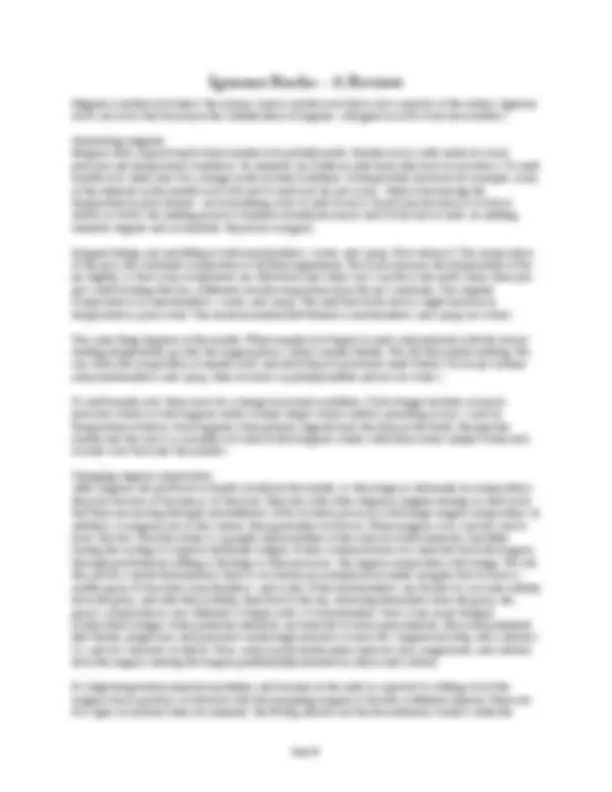
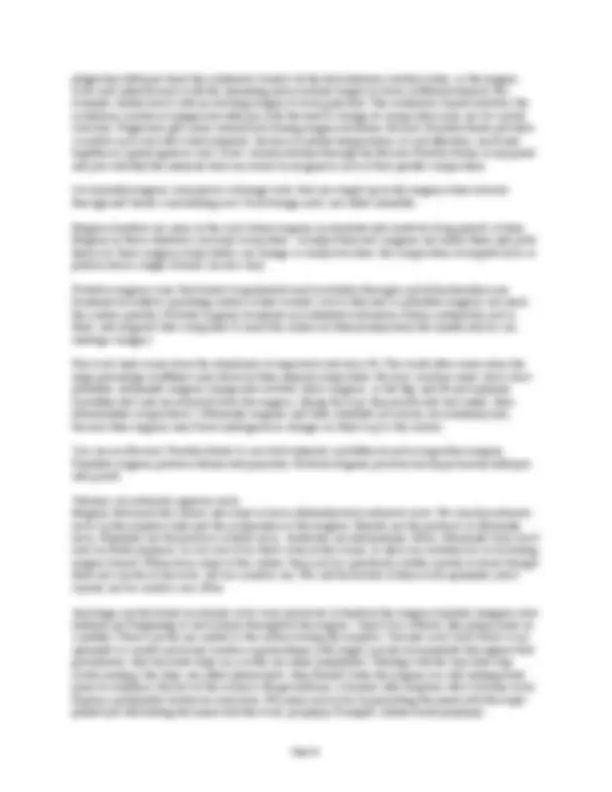
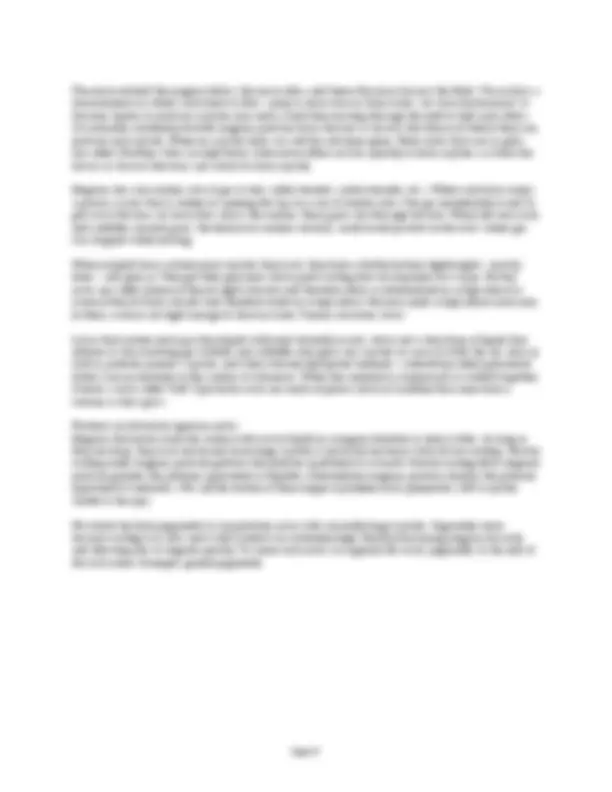

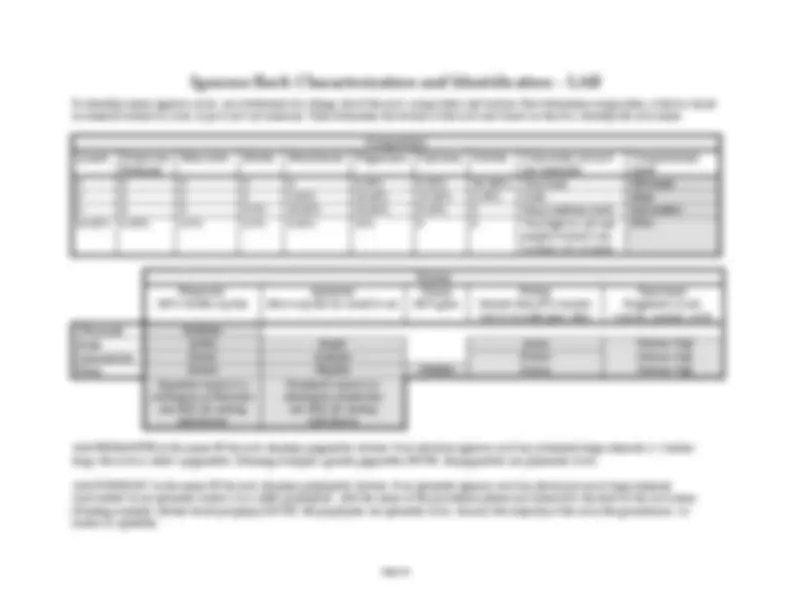
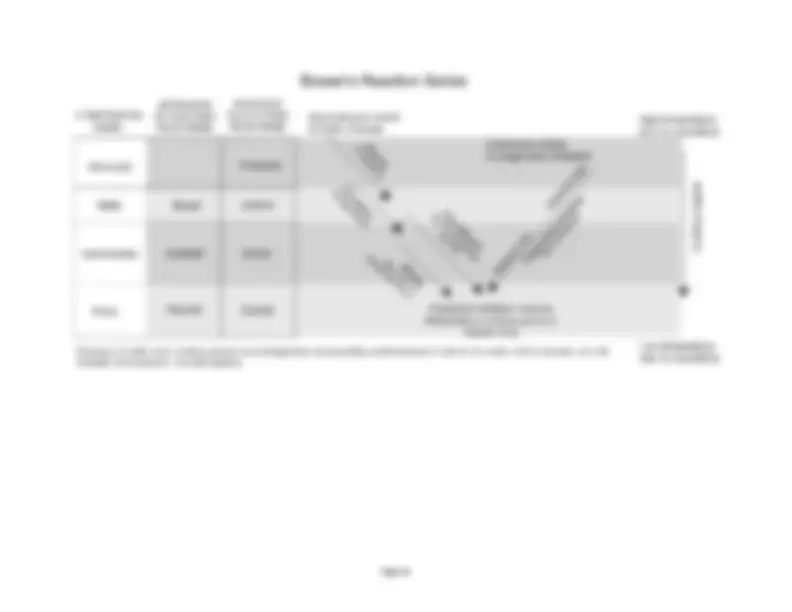
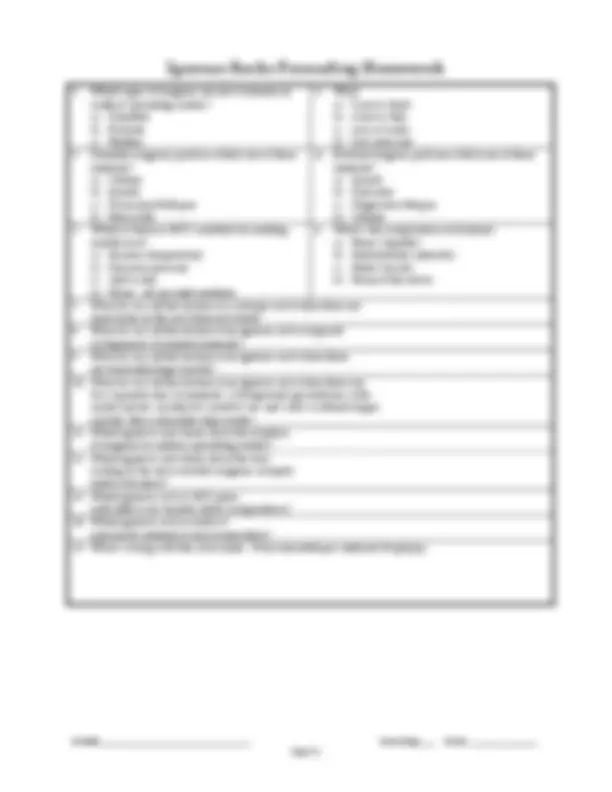

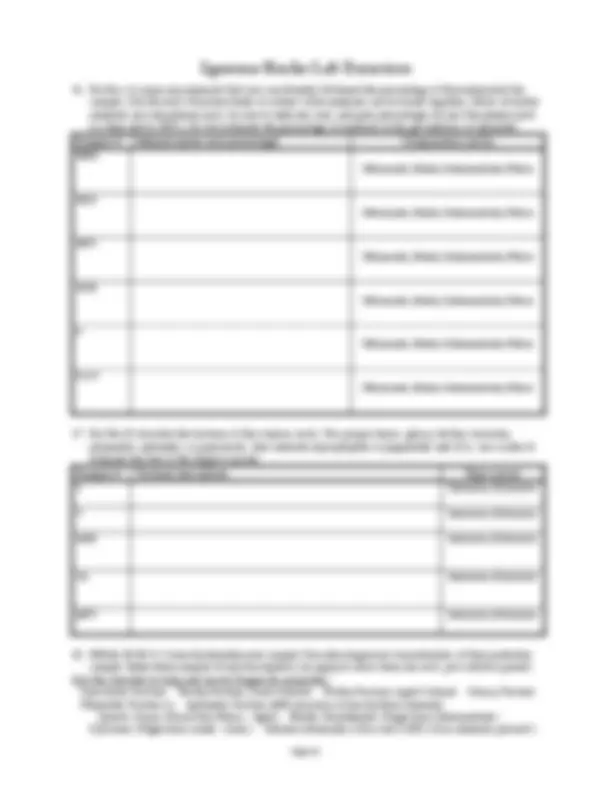
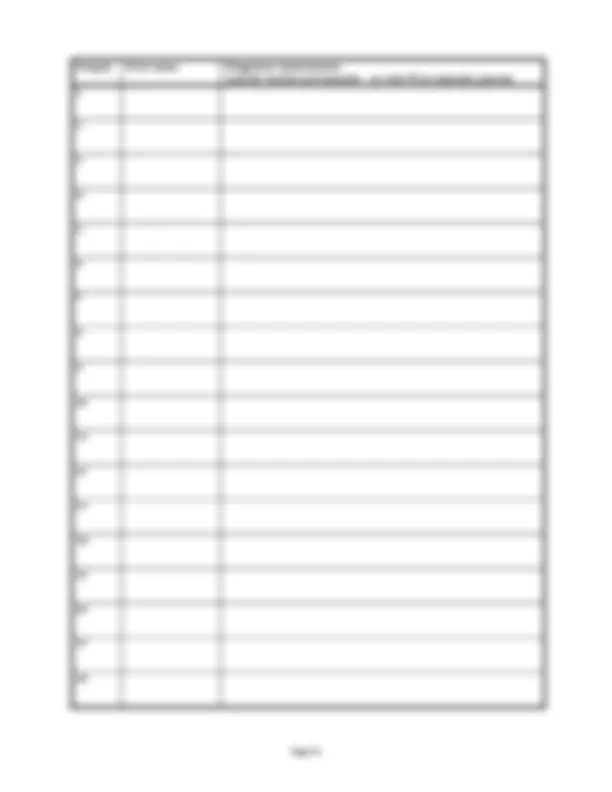
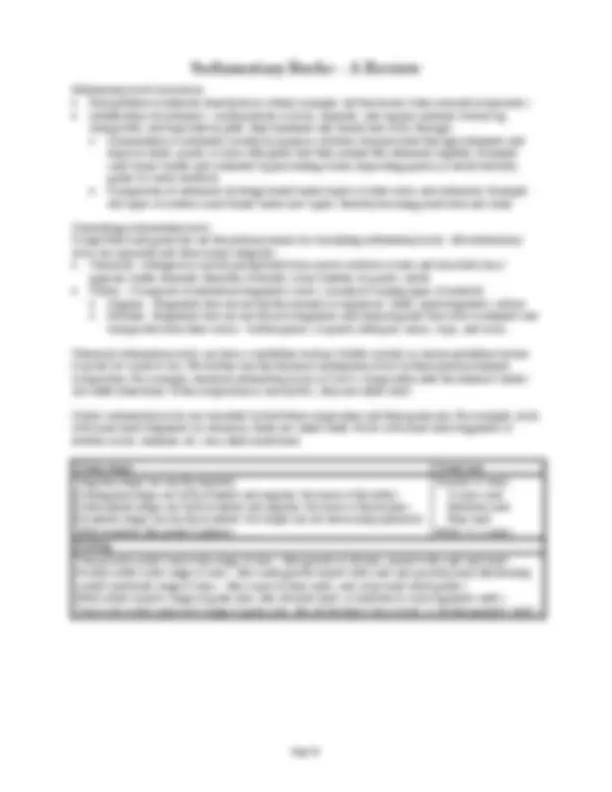
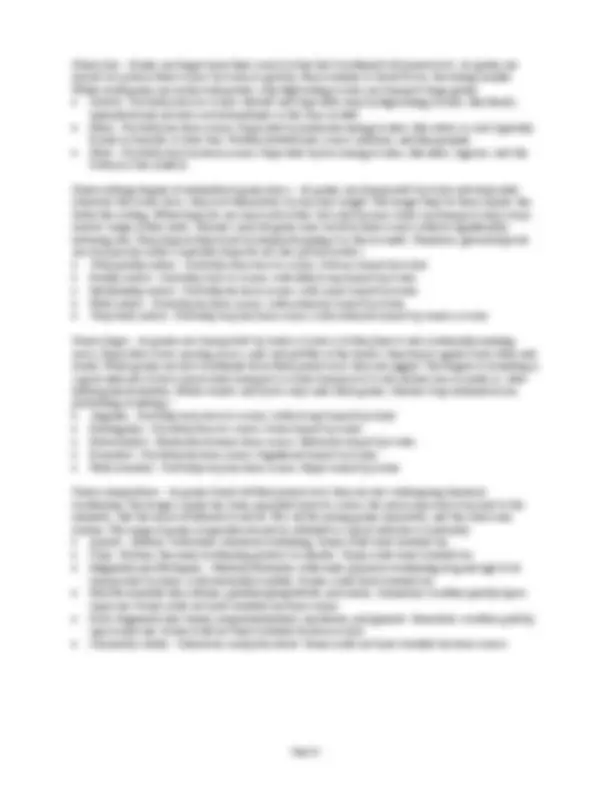
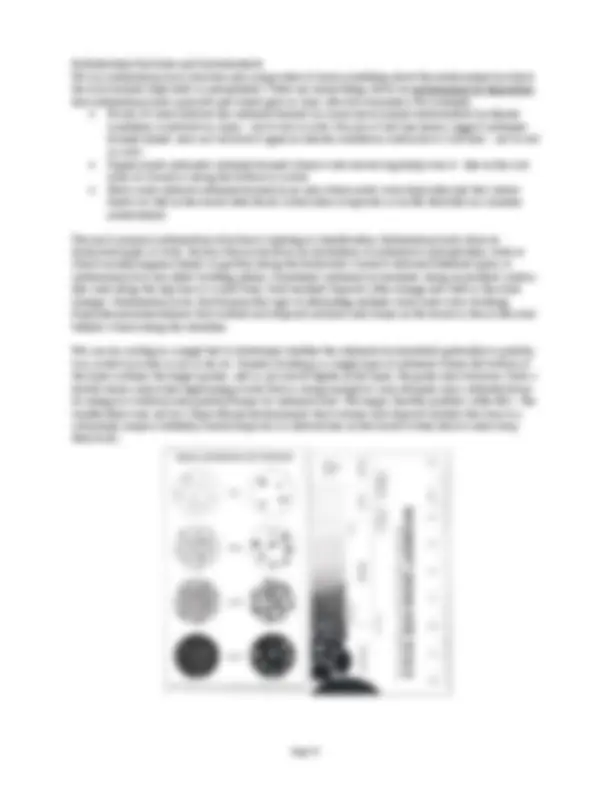
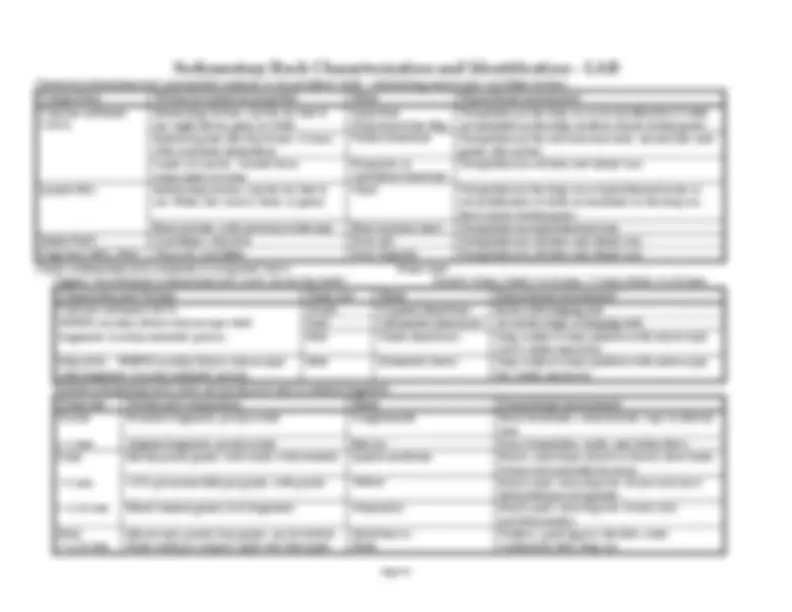
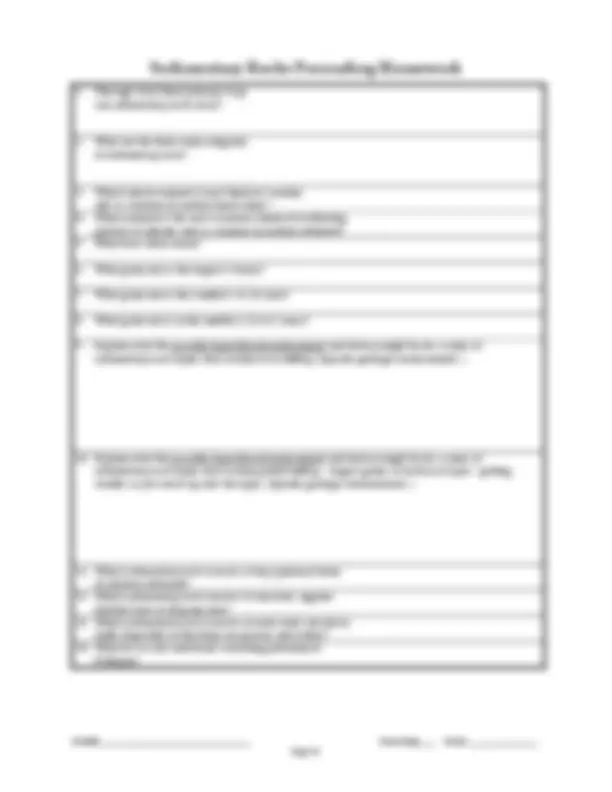


Study with the several resources on Docsity

Earn points by helping other students or get them with a premium plan


Prepare for your exams
Study with the several resources on Docsity

Earn points to download
Earn points by helping other students or get them with a premium plan
Community
Ask the community for help and clear up your study doubts
Discover the best universities in your country according to Docsity users
Free resources
Download our free guides on studying techniques, anxiety management strategies, and thesis advice from Docsity tutors
Material Type: Lab; Professor: Wiese; Class: Physical Geology; Subject: Geology; University: City College of San Francisco; Term: Spring 2009;
Typology: Lab Reports
1 / 154

This page cannot be seen from the preview
Don't miss anything!





























































































Location: Science 45 Credits: 1 Texts: Geology (same as lecture); Geology Lab Manual
Manual Published By Katryn Wiese (send edits/comments to kwiese@ccsf.edu)
Class Introduction and Lab Skills Worksheets Labs: Latitude, Longitude, World Maps, and Compasses Lab: Topographic Maps Exam I Lab: Structure Lab: Geologic Mapping & Cross-sections Lab: Geologic Maps – More Practice! Exam II Lab: Minerals Lab: Igneous Rocks Lab: Sedimentary Rocks Lab: Metamorphic Rocks Exam III Field trip: California Geology (2.5 hours) Lab: Geologic Time Lab: Geologic History (+ aerial photos) Exam IV
Using precision during computations Basic rule : if your computation involves any measured numbers, and those numbers all have the same unit, and your result also has the same unit (or none at all), then round your answer so it is as precise as the least precise of any of your starting measurements. Precision counts ONLY for measured values ( usually numbers with units!).
Unit conversion Method 1 (the simplest) When converting units, multiply your original number by a fraction that equals 1. (Remember, you can multiply any number by 1 without changing its meaning.) The fraction is a conversion factor with the units you want to cancel out on the bottom and the units you want to end with on the top. For example, to convert centimeteres to inches, you multiply by the fraction that shows that 2.54 cm = 1 inch. It doesn’t matter which number goes on top, because they are equal, so put the number on top with the unit you want at the end, and the unit on bottom you want to cancel out. To convert 3605 cm to inches: 3605 cm x 1 in = 1419 in 2.54 cm (Notice the answer is rounded to match the precision of the starting number – or to come as close as possible.) Method 2 (use only if this is the one you learned in math, and you don’t want to learn another one) When converting units, compare ratios. Take the number you want to convert and make it the denominator of a fraction on the left side of an equal sign. In the numerator, put the letter X followed by the unit to which you want to convert. On the right side of the equal sign, put the fraction that defines the conversion of those two units. Because the defined fraction on the right of the equal sign IS an equality, it doesn’t matter which number goes on top and which on bottom (it’s equal to 1). So, make sure that your numerator units match on both sides of the equation and your denominator units match. For example, to convert 3605 cm to inches: X in = 1 in Notice the X on the left with the new unit and the equality on the right with matching units. 3605 cm 2.54 cm Now we cross-multiply to solve. X in = (1 in)(3605 cm) = 1419 in (2.54 cm) Notice that centimeters cancel on the right, and you’re left with inches. (Notice the answer is rounded to match the precision of the starting number – or to come as close as possible.) 1 mi = 5280 ft 1 in = 2.54 cm 1 km = 1000 m 1 g = 0.035 oz 1 cm/yr = 10 km/my 1 ft = 12 in 1 km = 0.6214 mi 1 m = 100 cm 1 kg = 2.205 lbs 1 km/hr = 0.2778 m/s
Final Rounding Notes : If you convert units that are not close in magnitude, rounding is harder (for example, miles and inches are not close in magnitude, though miles and kilometers are). When units radically change, determine your precision by converting not only the original number, but also the upper and lower ranges of your original number. Compare the range conversions – the first place (from the left) that is NOT identical for both upper and lower range is the limit of your precision. Round your original number’s conversion to this place. Example : Convert 2111 m to km. ( Since we know this number only to the nearest m, it could be as big as 2111.4 m or as low as 2110.5 m. To correctly round the answer, we need to solve the problem for all three values – 2111.4 m, 2111 m, and 2110.5 m. The range will show us how precise our answer can be .) 2111 m x 1 km/ 1000 m = 2.111 km RANGES: 2111.4 m x 1 km/ 1000 m = 2.1114 km 2110.5 m x 1 km/ 1000 m = 2.1105 km Range is 2.1105 to 2.1114 km (the first place to change is the third decimal place; round original to this place): ANSWER 2.111 km
Angles Use a protractor to measure the following angles. To ensure you’re using the protractor correctly, first ask yourself, where 0 ° is in your diagram. Line the protractor up so the 0 value on the protractor points at 0° on your diagram. The T in the center of your protractor should line up with your angle or line.
32. A circle encompasses 360° of arc. Starting with 0 ° at the top (OR NORTH) of the circle , and moving clockwise, indicate the degrees of arc encompassed by each of the four divisions indicated in the graphic.
Notice that you need to measure only one angle above to find values of all the others.
a. A:_____________
b. B:_____________
c. X:_____________
d. Y:_____________
Adding and subtracting angles 1 degree (1°) can be broken into 60 equal pieces, each called 1 minute (1’); each minute is further divided into 60 equal pieces, each called 1 second (1”). Show ALL work.
32 °45’36” + 3°25’52” =
Latitude and longitude By international agreement the earth's surface is divided by a series of east-west and north-south lines to form a grid. If the earth's surface were flat, it would be easy to set up a global grid system. Simply designate some point as the starting place (origin) and measure your distance east or west (right or left on a map) and north or south (up or down on a map) relative to the origin. But the earth's surface is circular, so we must do something slightly more complicated. Instead of measuring miles or inches up and down and right and left from the origin, we measure angles (degrees). There are 360 degrees (°) in a full circle, 60 minutes (‘) in one degree, and 60 seconds (‘’) in one minute. These minutes and seconds are units of angle and have nothing to do with time. We use the intersection of the equator (imaginary line running around the center of the planet) and prime meridian (imaginary line connecting the poles and intersecting Greenwich, England) as the origin. So we can describe each surface position in degrees north or south of the equator (90° north and south are the maximums) and degrees east or west of the prime meridian (180° east and west are the maximums).
Most maps are based on latitude and longitude: their east and west boundaries are meridians and their north and south boundaries are parallels. The United States Geological Survey (USGS) currently produces only 7.5-minute (1/8°) quadrangles, which means that there are 7 ½ minutes of latitude between the north and south boundaries and 7 ½ minutes of longitude between the east and west boundaries. Such maps are significantly narrower than they are tall: the east-west distance across the map is less than the north-south distance even though the map encompasses the same amount of latitude and longitude. { One 15’ quad is 15’ of latitude by 15’ of longitude. There are four 7.5’ quadrangle maps in each 15’ quadrangle map.}
Map making on a global scale is a series of clever compromises to do a good job showing a spherical surface on flat paper. The only truly accurate map is a globe. All other maps have inherent distortions. Goode’s homolosine projection. The obvious problem with this projection is that adjacent areas in some parts of the world are depicted as being widely separated. The Goode’s projection in particular cuts the continents and so shows the three oceans to best advantage. Note that the meridians of longitude converge to points, thus not distorting the shapes and sizes of high-latitude areas. Areas on this map are equal.
Mercator projection. Shapes are similar to globe, but areas are distorted, appearing wider as you move away from the equator. South America is really 9x bigger than Greenland. Does it look that way here?
Hoelzel projection. Note that the meridians of longitude converge to a line shorter than the equator but still not a point. Thus polar areas are more distorted than equatorial areas, but not as much as in Mercator projections.
Orientation All U.S.G.S topographic maps and most other maps are made with north at the top of the sheet. True north is the direction to the north geographic pole (true north – designated as TN or *). The north- seeking end of a compass needle is attracted to the earth's north geomagnetic pole, which is located about 1400 miles south of the north geographic pole in an area west of Greenland and north of Labrador. Each topographic map has two north arrows in the lower margin, indicating the directions of both true north and magnetic north. The angular difference between these two directions is called the magnetic declination.
Nautical charts use compass roses to indicate magnetic declination. This compass rose is for a chart along the coast of eastern Africa. It indicates that magnetic north in that region of the world is 14º45’ west of true north (a counterclockwise rotation). If navigators do not modify their compasses accordingly, they will not be traveling in the right direction. Also, magnetic north wanders regularly. Compass roses always explain how magnetic north varies in an area each year. (This compass rose
Plotting a course A ship’s course , expressed in degrees clockwise of North, is the intended direction of travel. For example, a course of 180° is due south, and one of 90° is due east. However, winds, currents, and pilot error may prevent the ship from adhering to a particular course. A ship’s heading or track is the direction in which the ship is actually traveling, regardless of its prescribed course. A bearing is the angle between North and a line that connects you and the point you’re viewing. For example: if you’re in a boat pointing due north (course is north), and you are observing a lighthouse through the fog immediately east of you, the lighthouse’s bearing is 90°. Courses, headings, and bearings are expressed as angles measured clockwise from north. (O° is north; 90° is east; 180° is south; 270° is west.)
Determining location using a compass or sextant Even out of sight of land, sailors have navigated for centuries by measuring apparent positions of stars at night and of the sun during daylight. When sailing in a bay or in sight of the coastline, you use a compass to get bearings on two prominent landmarks. Lines drawn on the map from the landmarks and with the measured bearings intersect at the point from which the readings were taken. You can do the same thing, without a compass, by measuring two horizontal angles between three landmarks: the angle between point A and point B and the angle between point B and point C. The device traditionally used to do this is the sextant – essentially a fancy protractor that allows you to sight on distant points.
The development of satellites and digital electronic devices has made it possible to keep continuous track of your position on the earth with a precision of a few centimeters (using the best equipment available) or a few meters (using hand-held equipment that costs well under $1,000). Satellite-based electronic positioning, the Global Positioning System (GPS) , was established by the U.S. military, but is available for use in nonmilitary applications. A ground-based receiver picks up signals simultaneously from three or more satellites, and the distance from each satellite to the receiver is automatically computed. With four satellites involved, there is only one point in the universe at those four distances. Your location is displayed as latitude, longitude, and elevation.
LORAN LORAN is commonly used on vessels that are close to shore. Stationary land-based transmitters do essentially the same thing that GPS satellites do. Few boats of any size are without a LORAN receiver.
NAME: _____________________________________ Prereading ___ Grade _________________ Used pencil? (1 pt) ____ Page 13
Use your own words in your answers – NOT verbatim from the prereading material.
Compasses
In-class globes
San Francisco South Quadrangle Look at the San Francisco South quadrangle topographic map. Note that there are two sets of numbers on the edges of the chart. The black numbers that appear most frequently are military numbers. Ignore those. Instead, look for the longitude and latitude measurements. You can find them on all corners, and usually 2-4 more evenly spread across each map edge.
Compasses The Brunton compass has a two rings on the outside. The outer one goes from 0 to 360 and represents oceanographic standards for determining bearings and directional orientations. The inner ring indicates N, S, E, W and has angle measurements from 0 to 90 and represents geologic standards for determining orientations. The markings on the compass appear reversed from what you would think, so that the compass will give you the correct reading when the internal magnetic points north. Don’t worry about the markings – just read them! The inside of the compass is used for measuring dip.
Get a lab compass and ensure it is corrected for true north vs magnetic north. Here in San Francisco, the magnetic declination is N16E. Go outside behind the lab (the metal in the lab tables make this exercise impossible to do in class).
Mono Craters Quadrangle
Mt Whitney Quadrangle
Colors and symbols Five colors are used on modern topographic maps, each with specific meanings as follows:
Contour lines Topographic maps are essential tools in geologic studies because they show the shape of the land surface in great detail. This is accomplished by means of carefully drawn contour lines, which connect points of the same elevation. Because the sea surface is (nearly) horizontal, you might think of contour lines as successive shore lines that would be made by the ocean if it were to rise and cover the land. The contour interval is the difference in elevation between one contour line and the next. The contour interval for a given map may be any value, commonly from 5 feet to 100 feet, depending on the scale and the steepness of the terrain. Some maps have two contour intervals, a small interval for flat or gently sloping ground, and a large interval for more rugged terrain.
The contour lines are based on surveyed elevations of key points in the area. The U.S. Coast and Geodetic Survey and the U.S. Geological Survey have set permanent brass, iron, and concrete markers as bench marks for use in surveying both horizontally and vertically. Bench marks are most commonly established at road intersections, on railroads, bridges, mountain tops, and other prominent locations.
These miscellaneous facts should help you interpret the patterns made by contour lines.
Determining elevations The elevation of a point is its vertical distance above sea level. Specific elevations are commonly given for town centers, hilltops, bottoms of depressions, road junctions, and index contours. Elevations between contours should NOT be interpolated. For example, elevation of a point midway between the 1240 and 1260-ft contours should be given as 1240 < X < 1260 ft. Approximations assume that slopes are straight between contour lines. This assumption is rarely the case.
Topographic profiles Topographic maps represent the land surface as seen from directly above. A topographic profile is a sideways view of the shape of the land surface (like cutting a donut in half and looking at its cross- section). Profiles are important for detailed studies of landforms and geology.
The vertical scale of a profile may be exaggerated to emphasize landscape features. If the horizontal scale is 5000 ft per inch, and vertical features are plotted so that one inch represents 1000 ft, the vertical exaggeration is 5:1. For most purposes, including geologic cross-sections, vertical and horizontal scales should be the same. To construct an accurate profile along any straight line on the map: